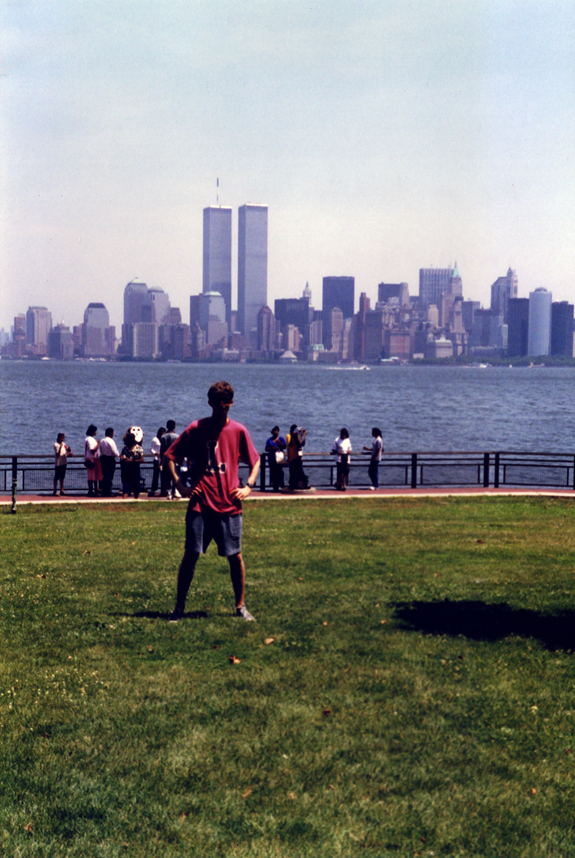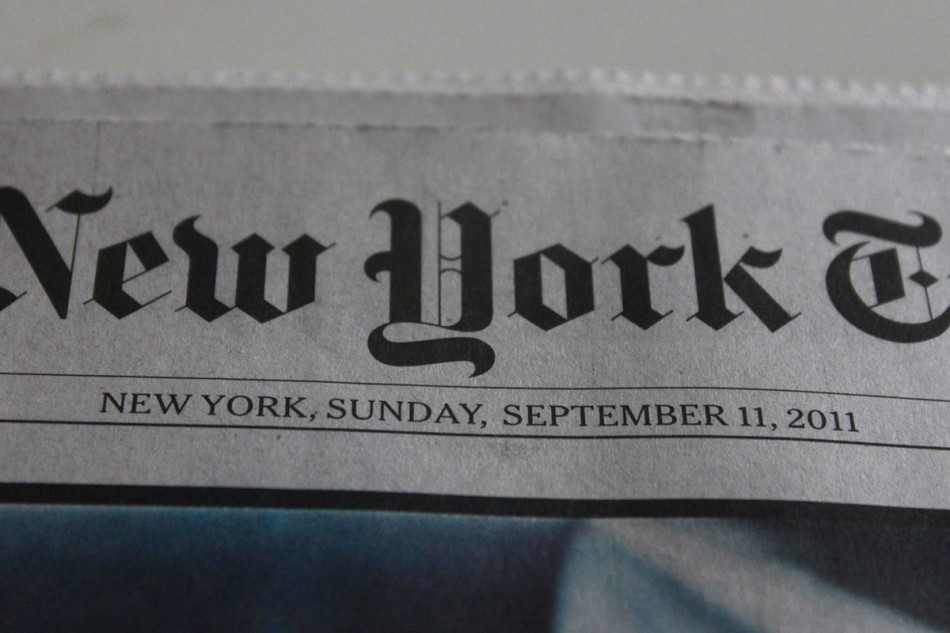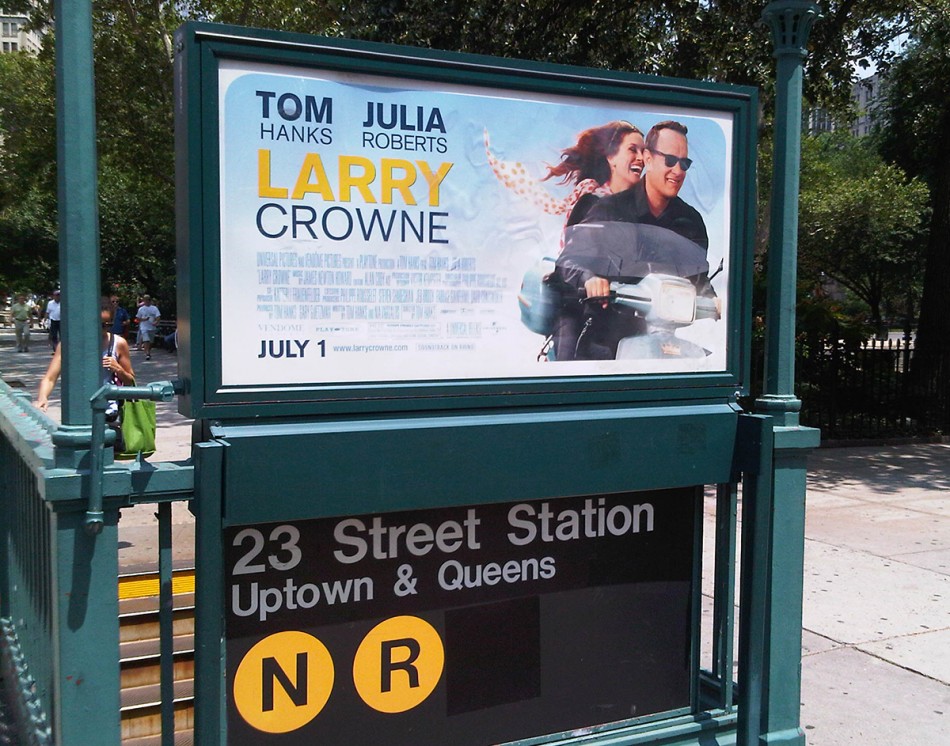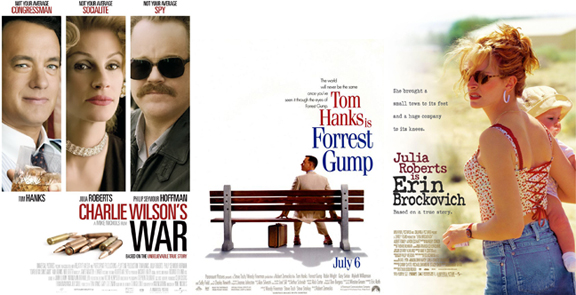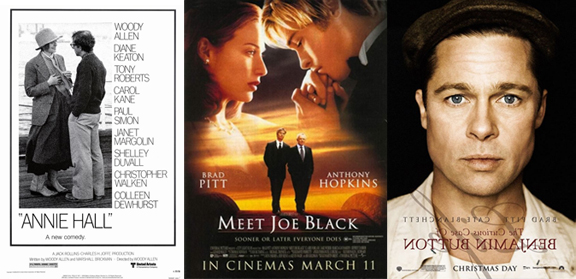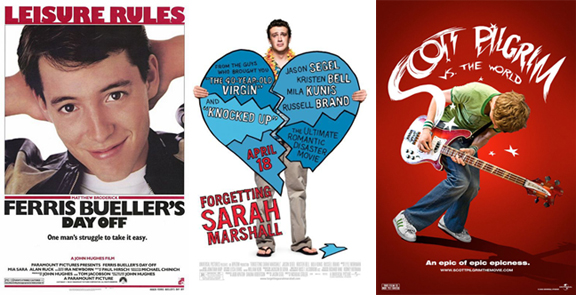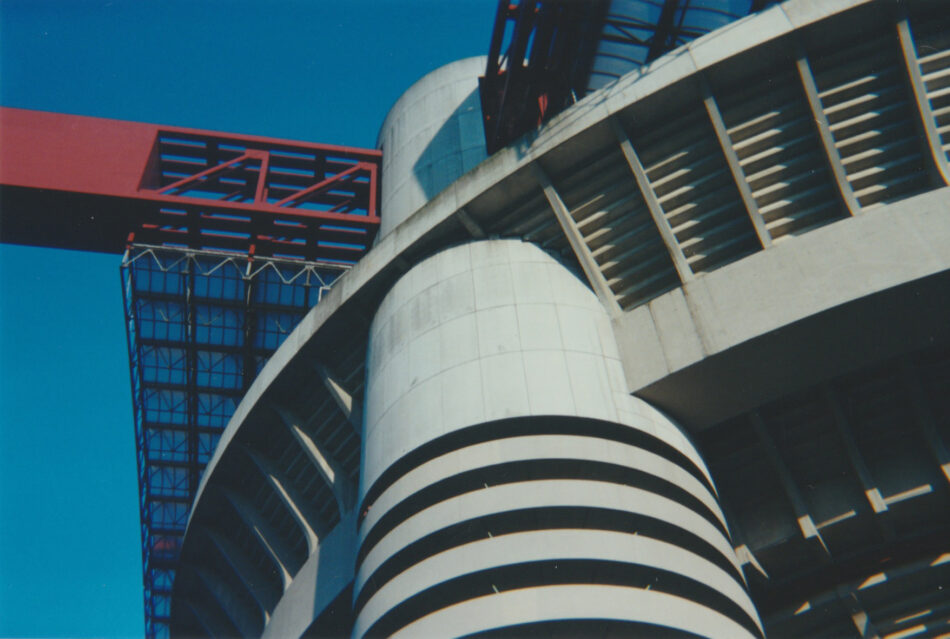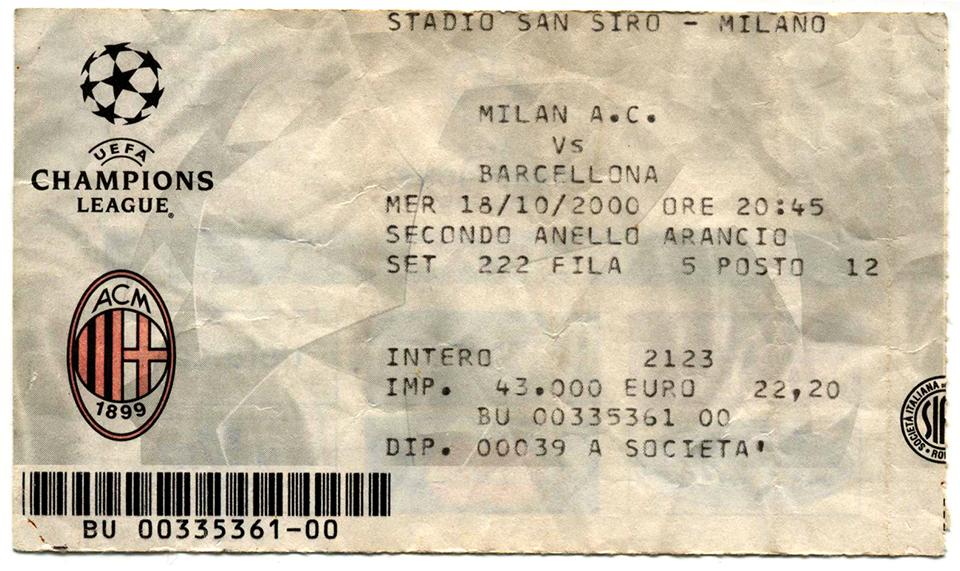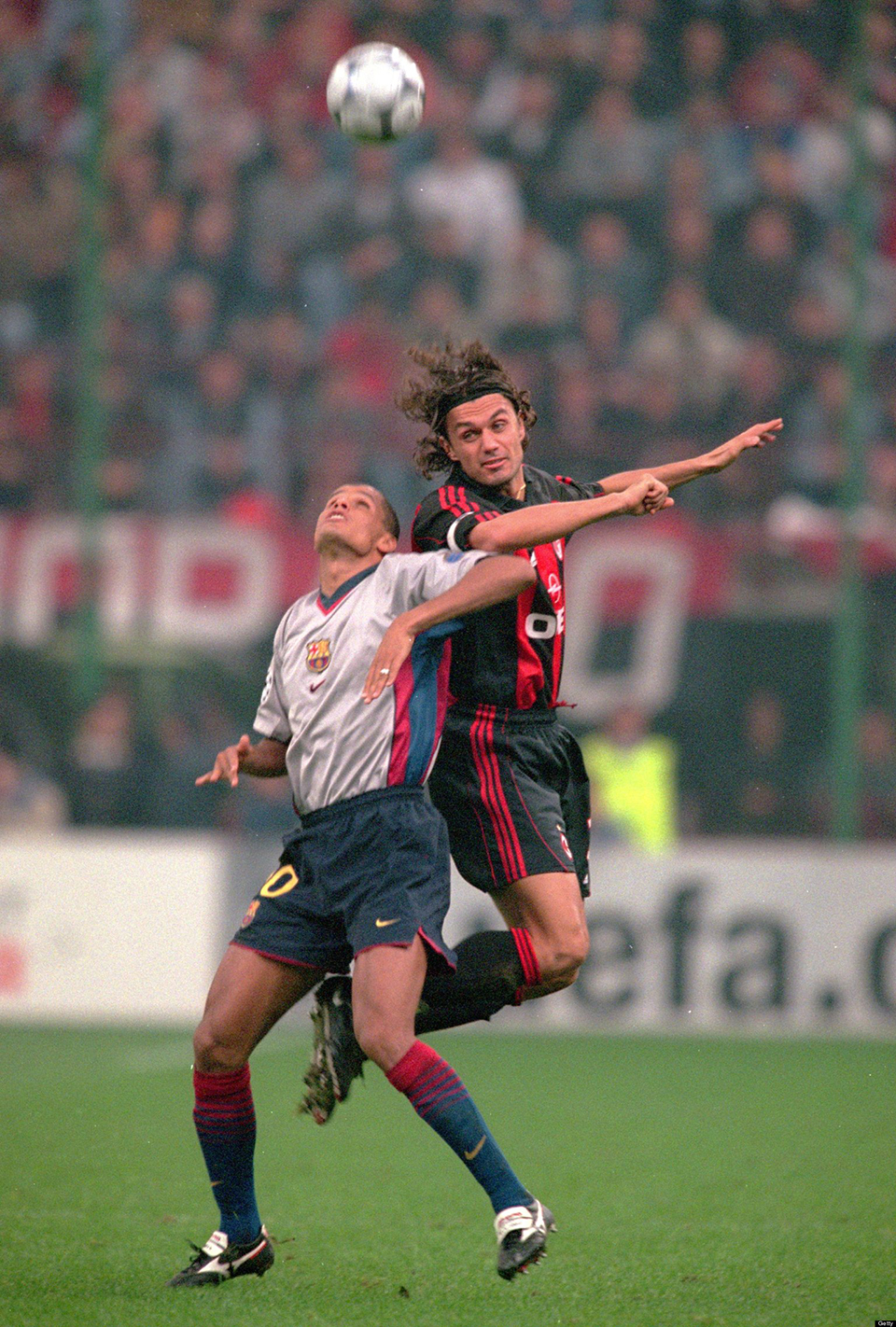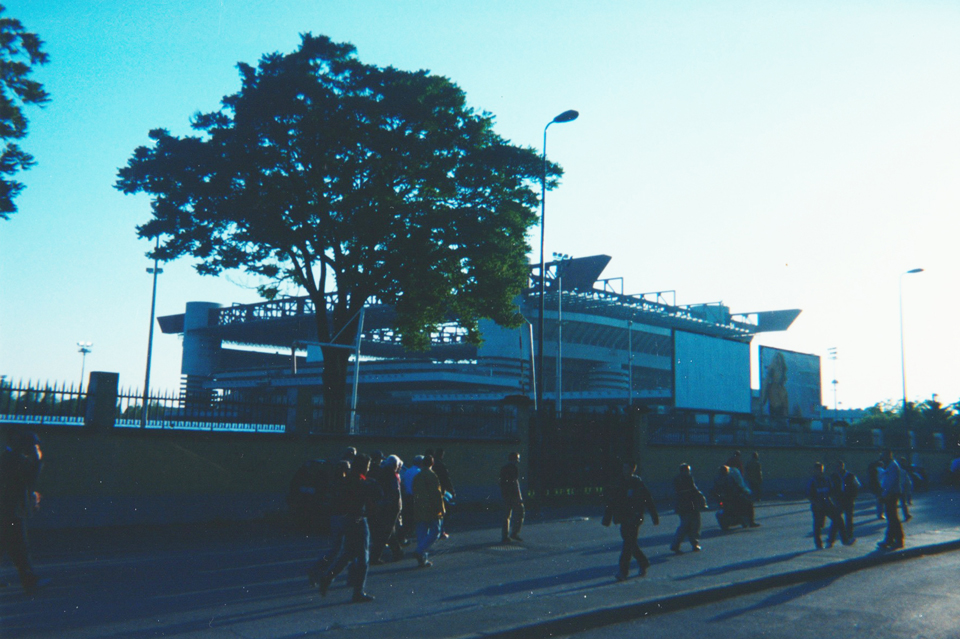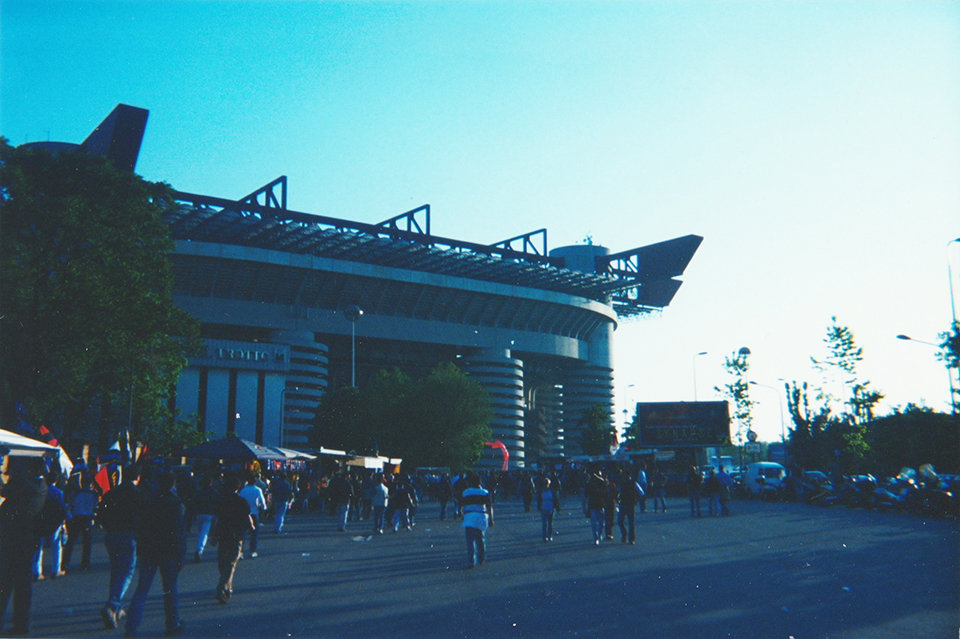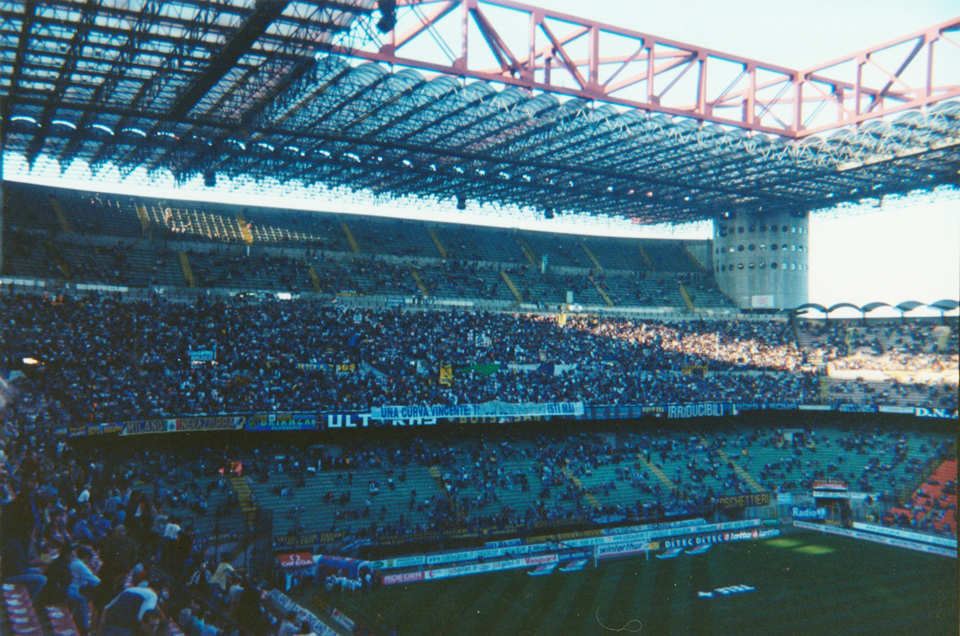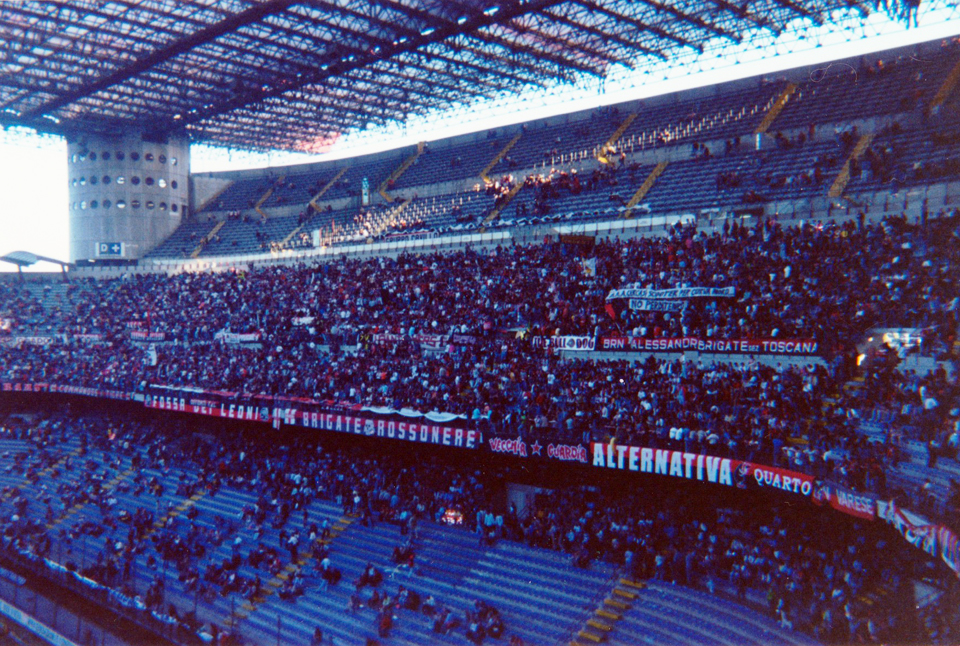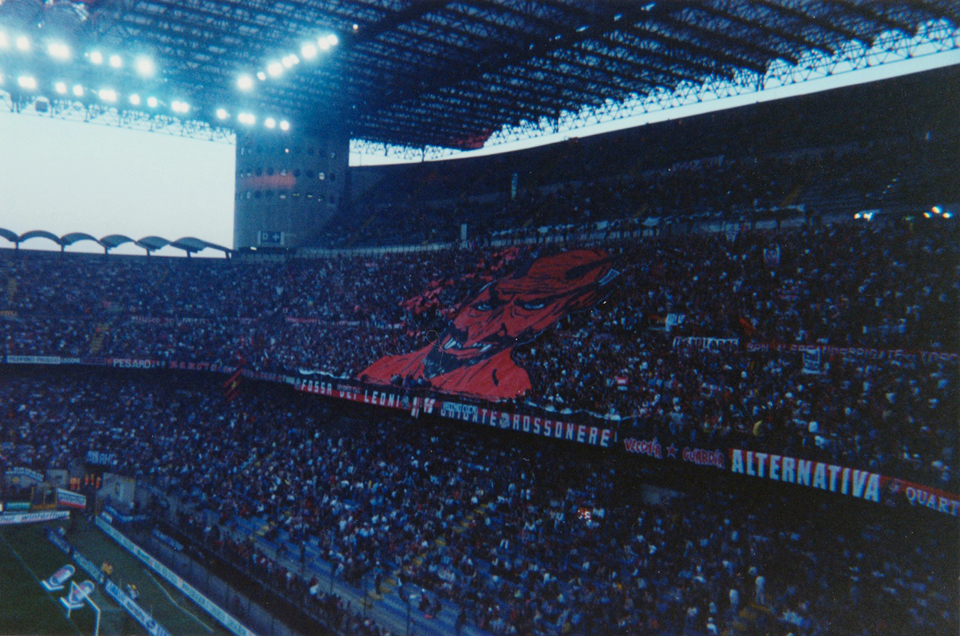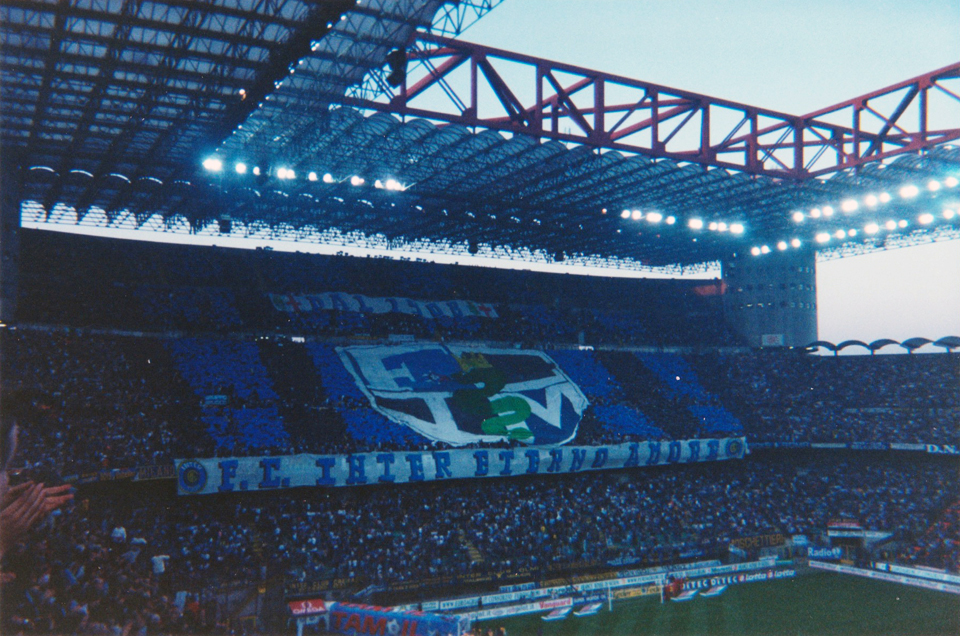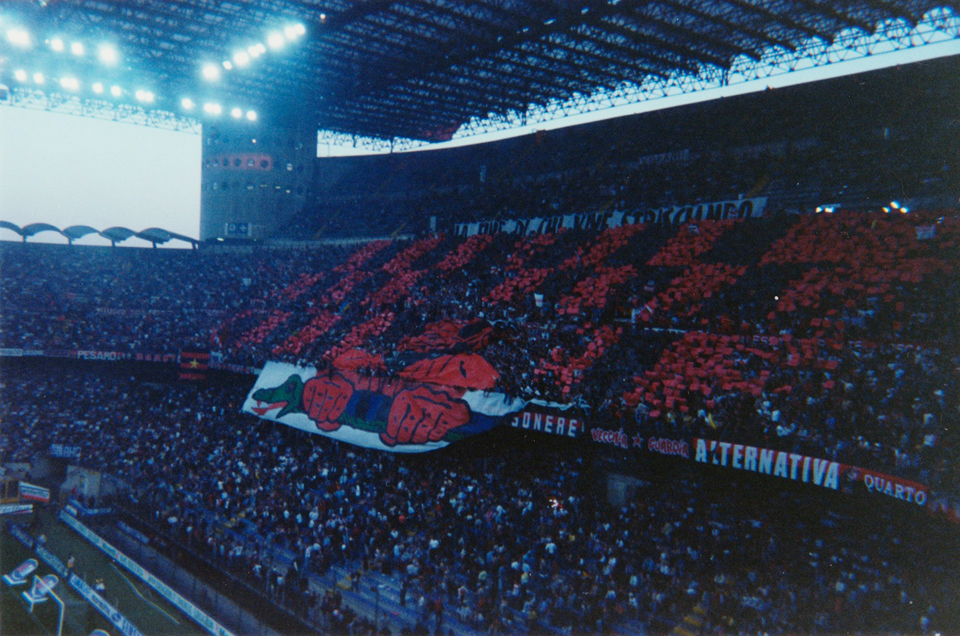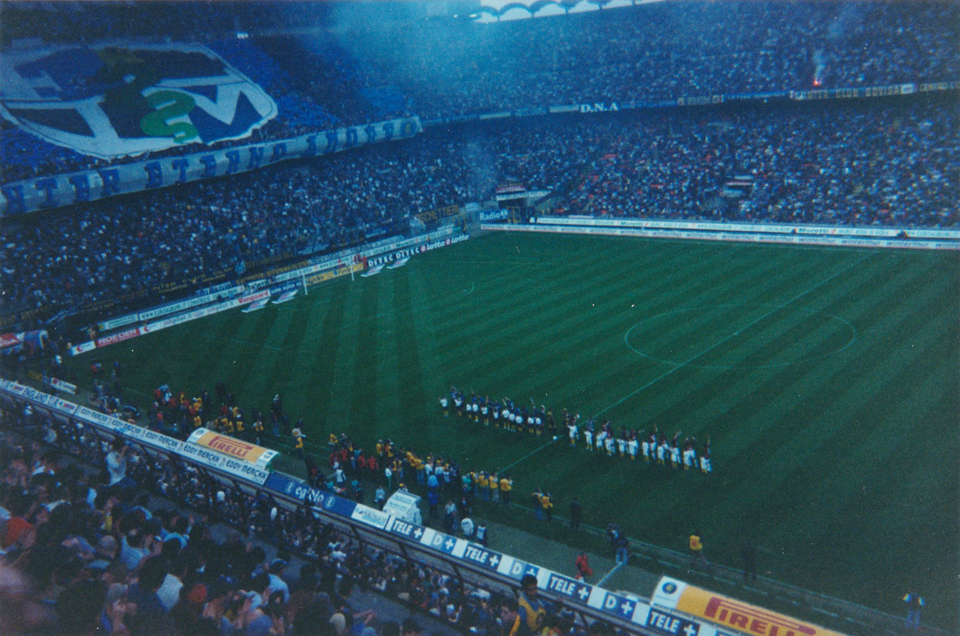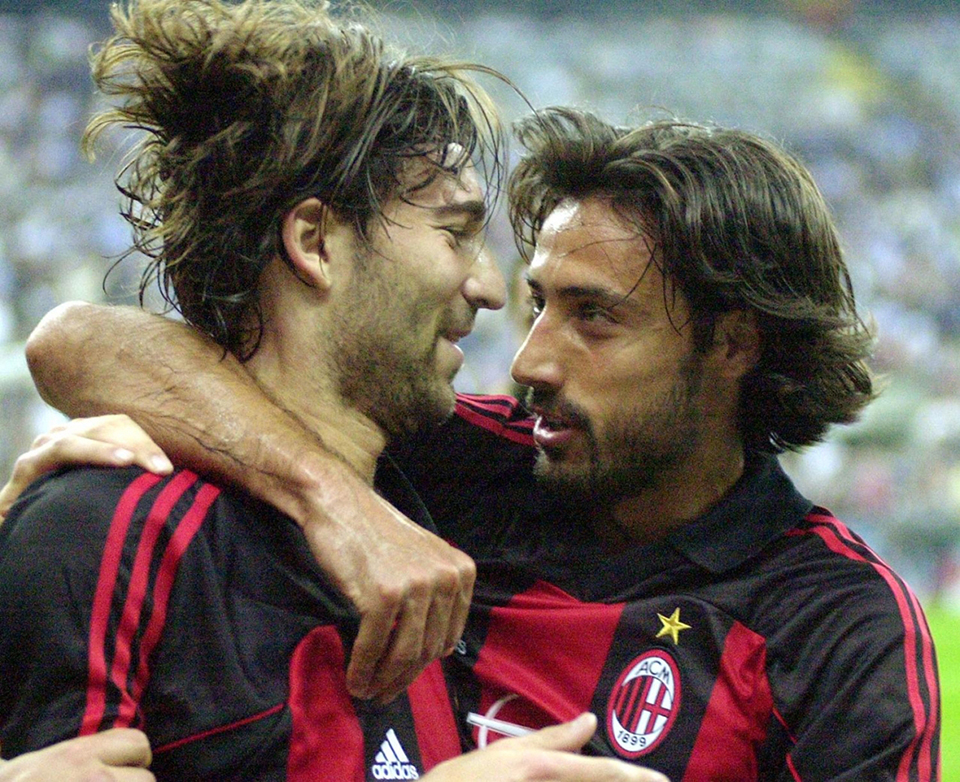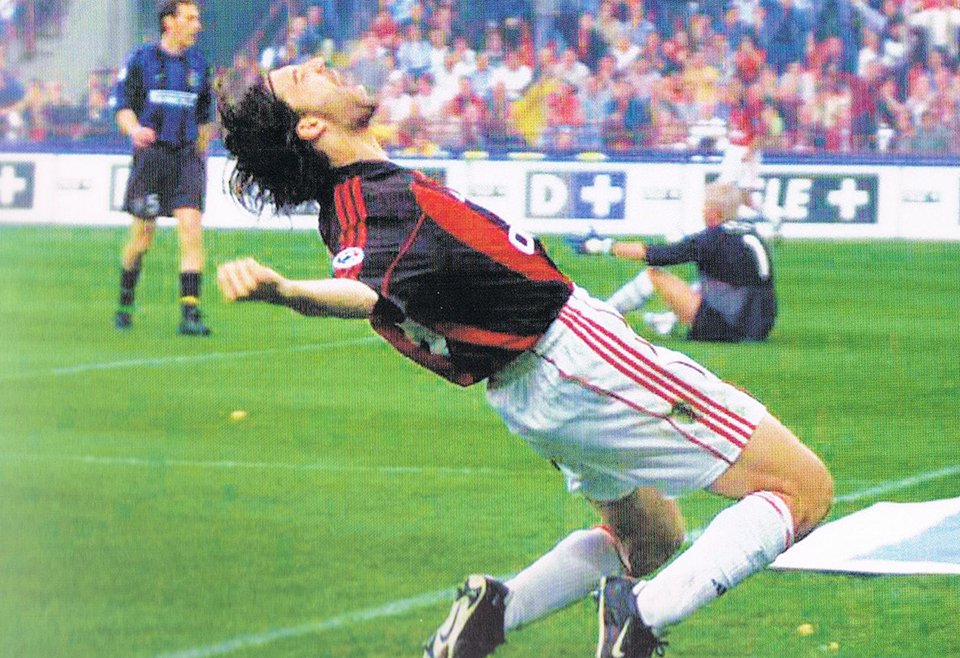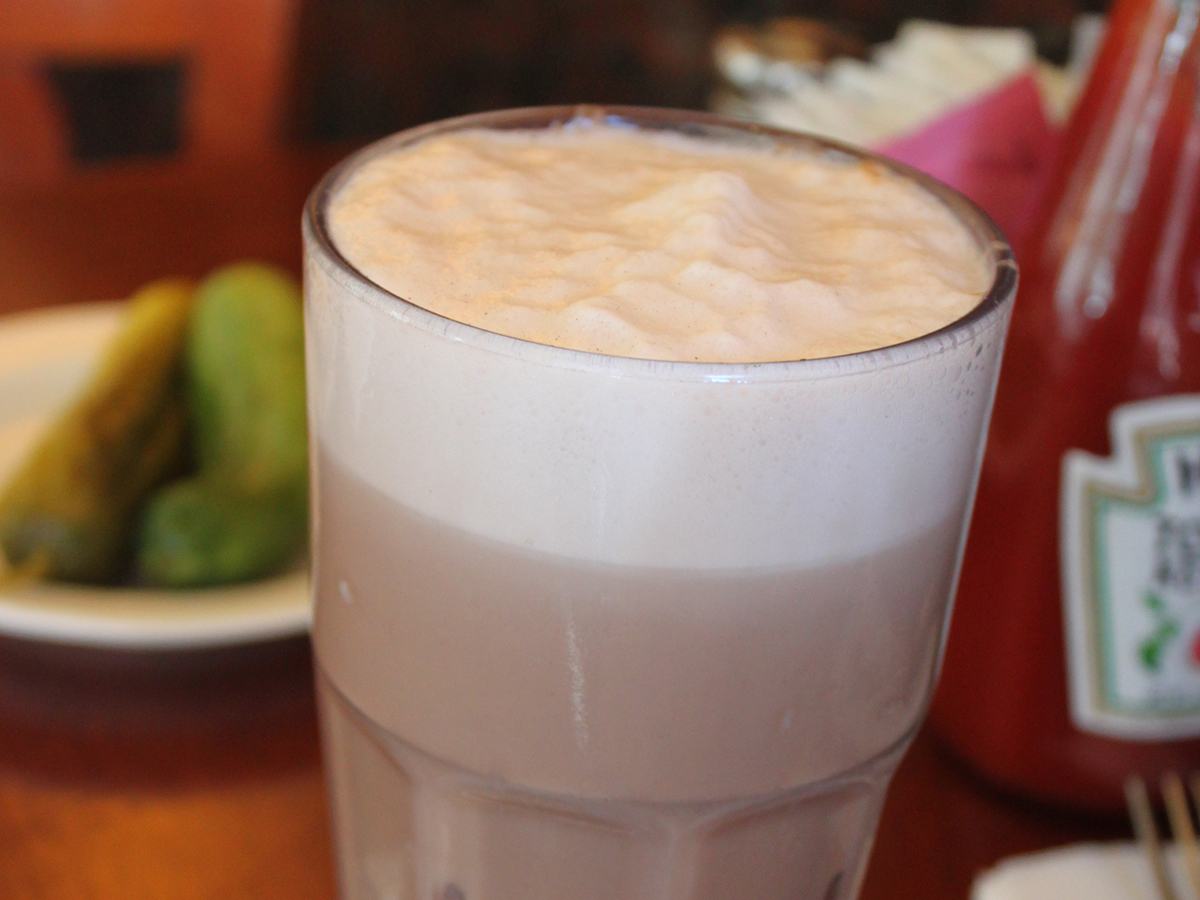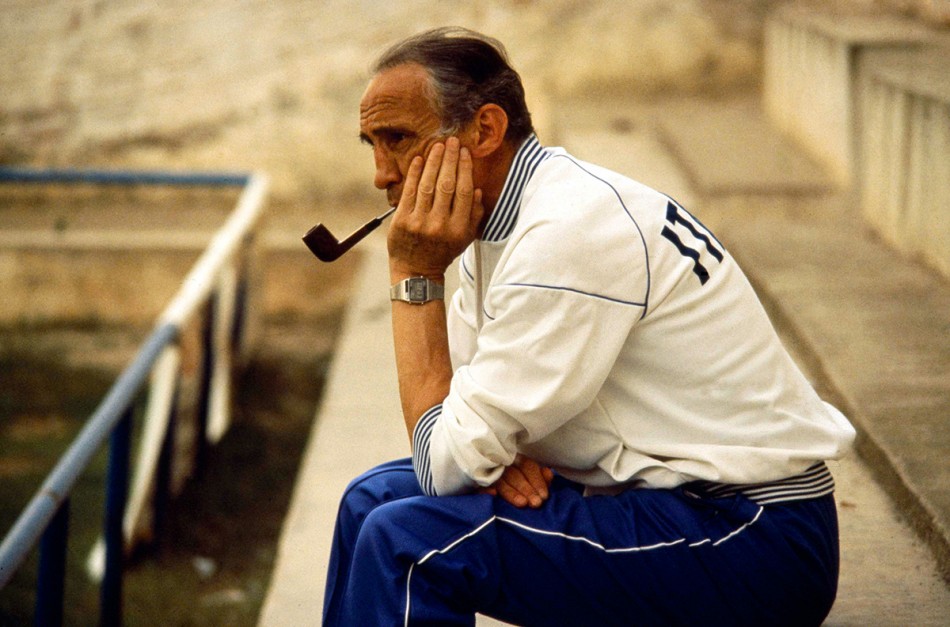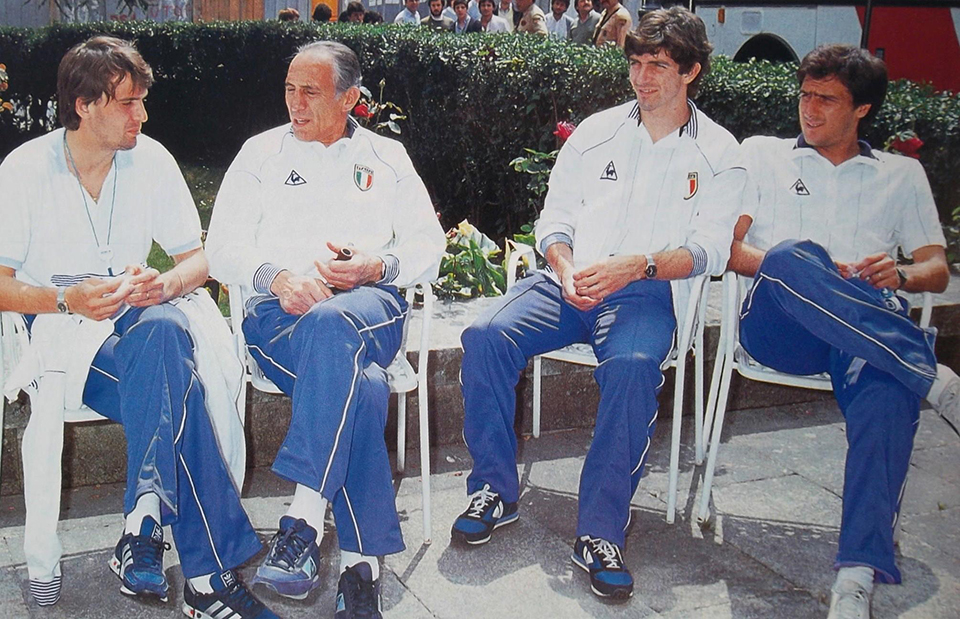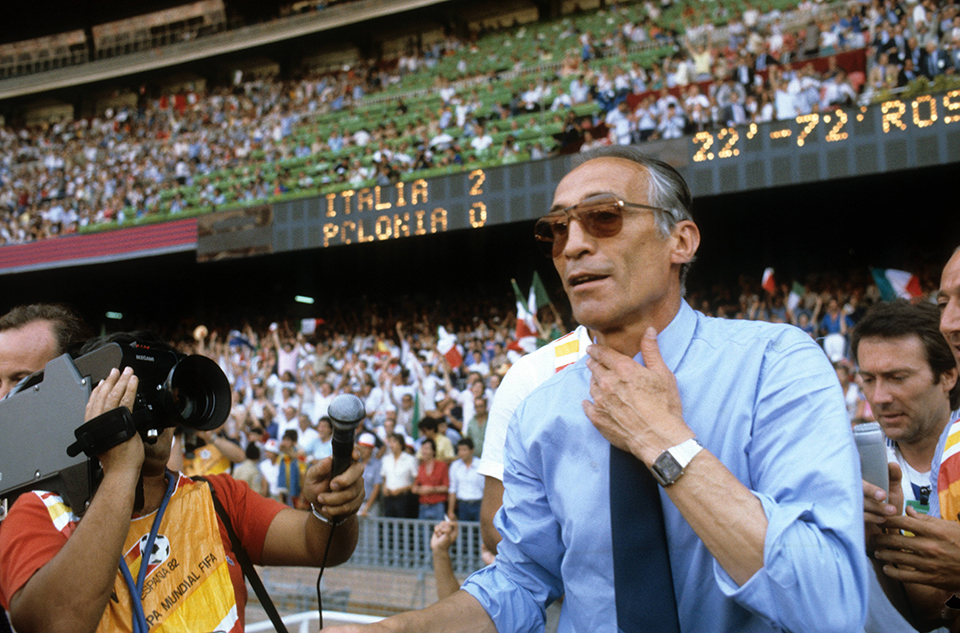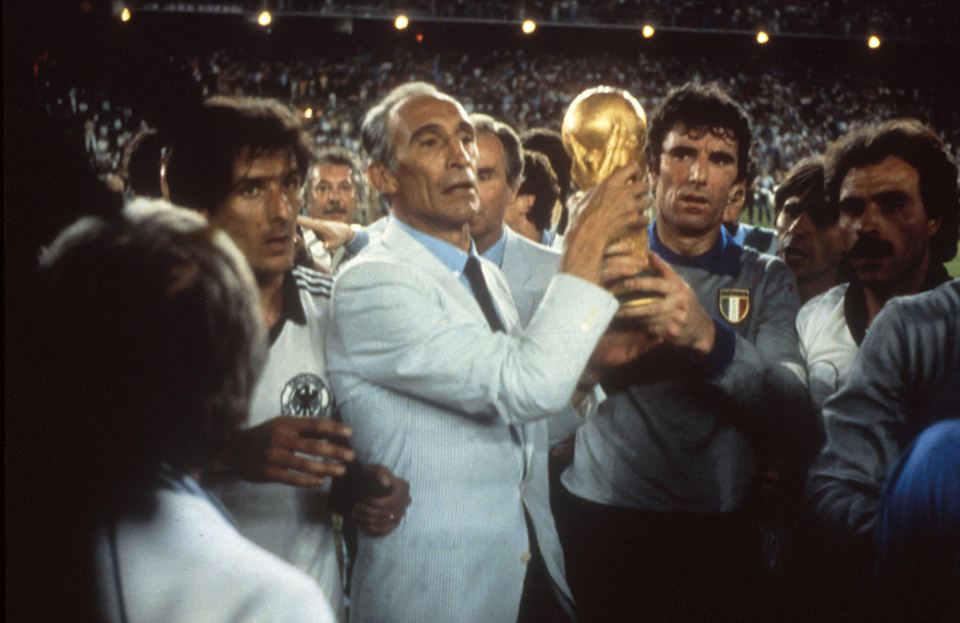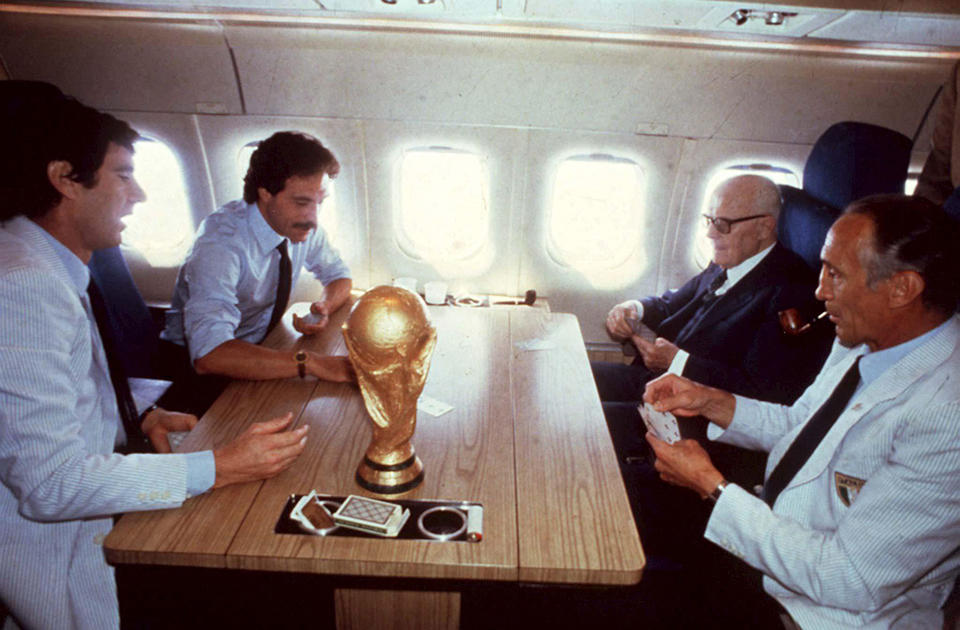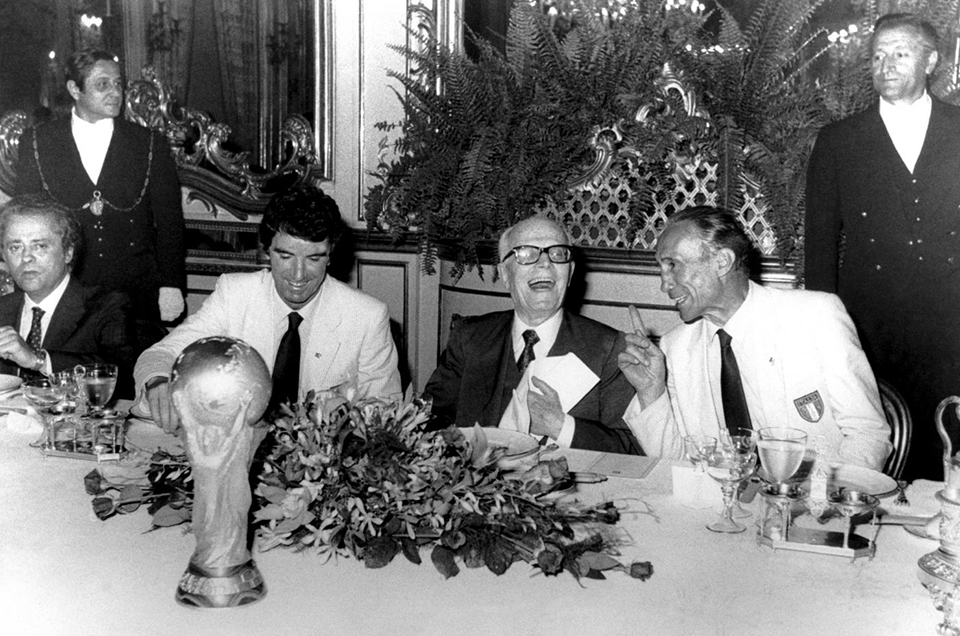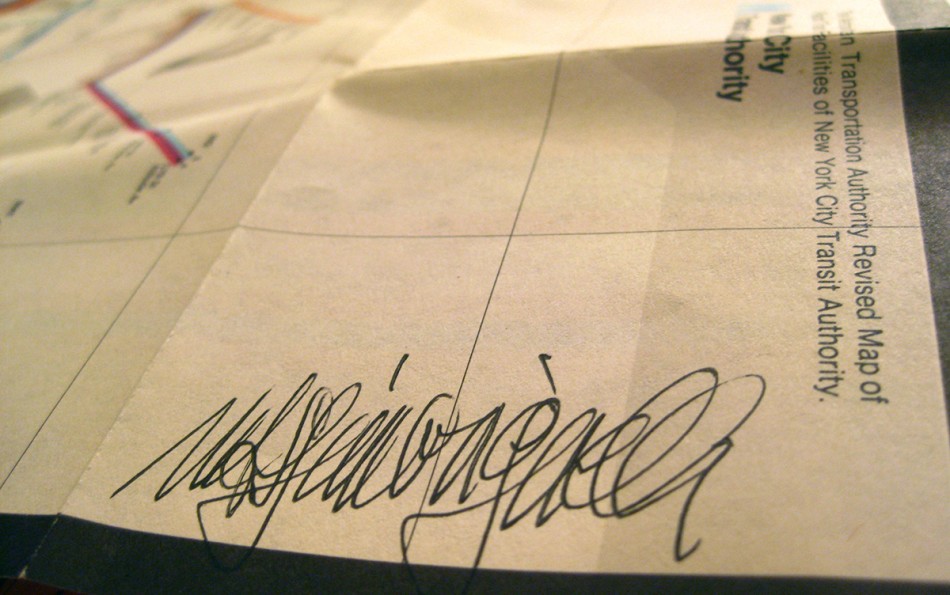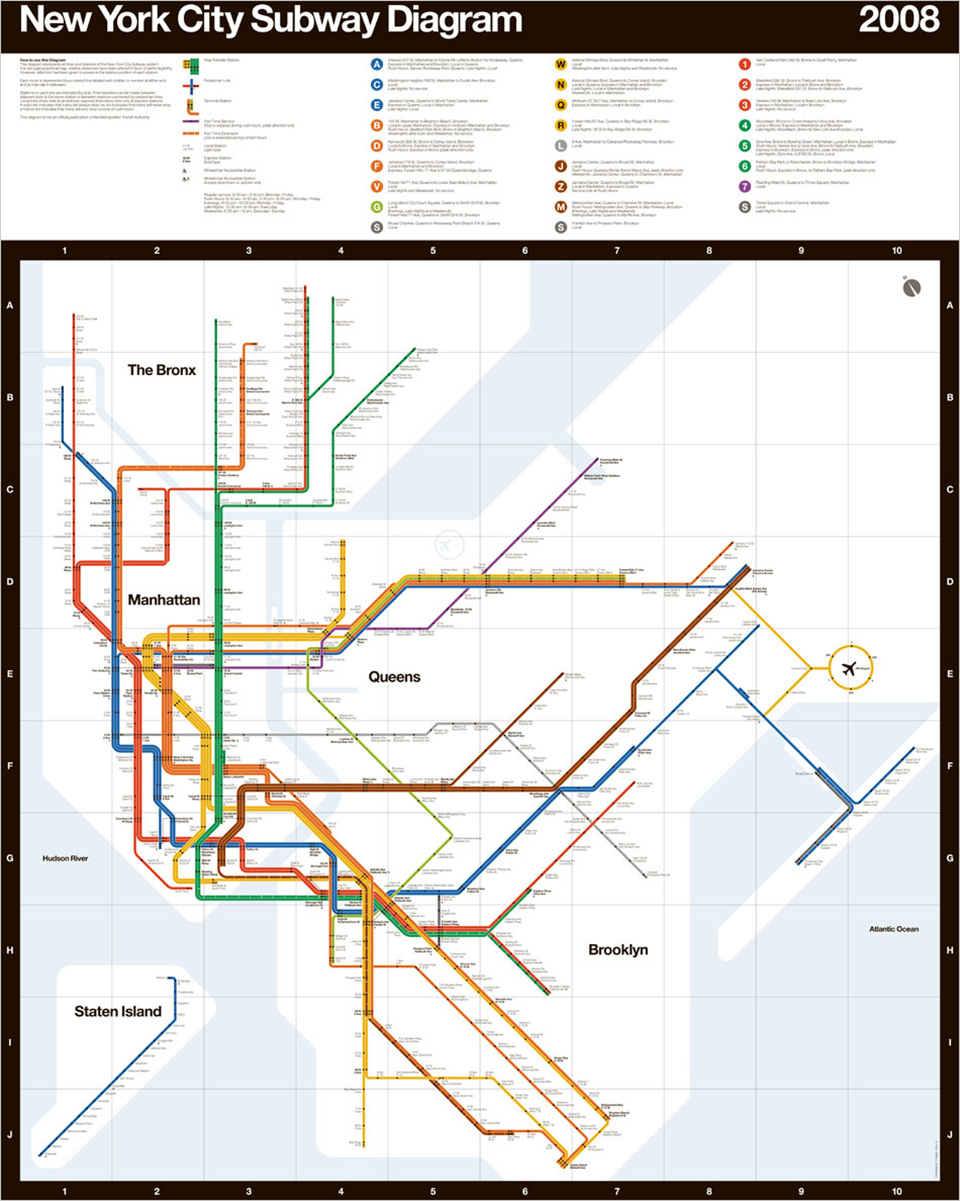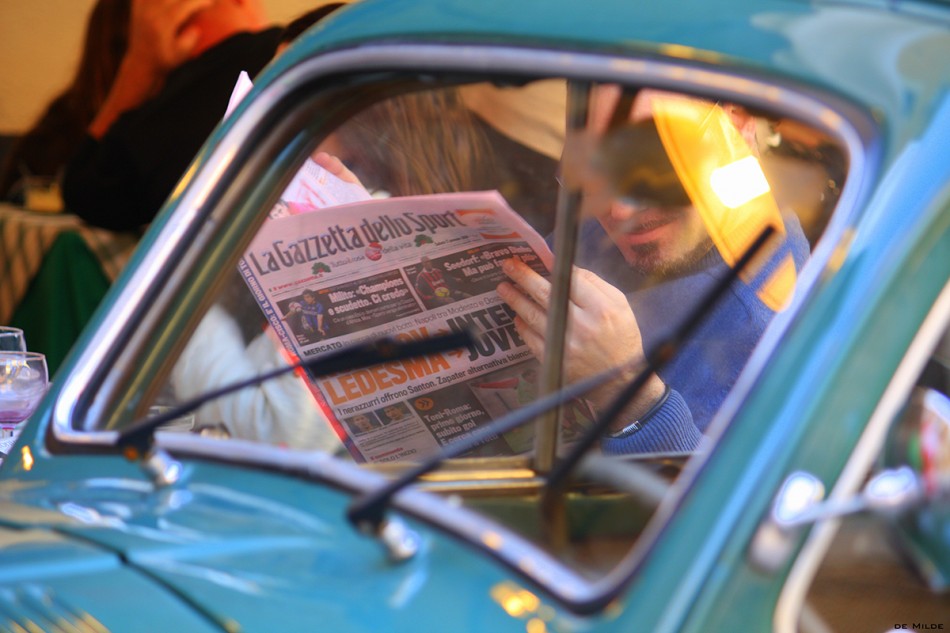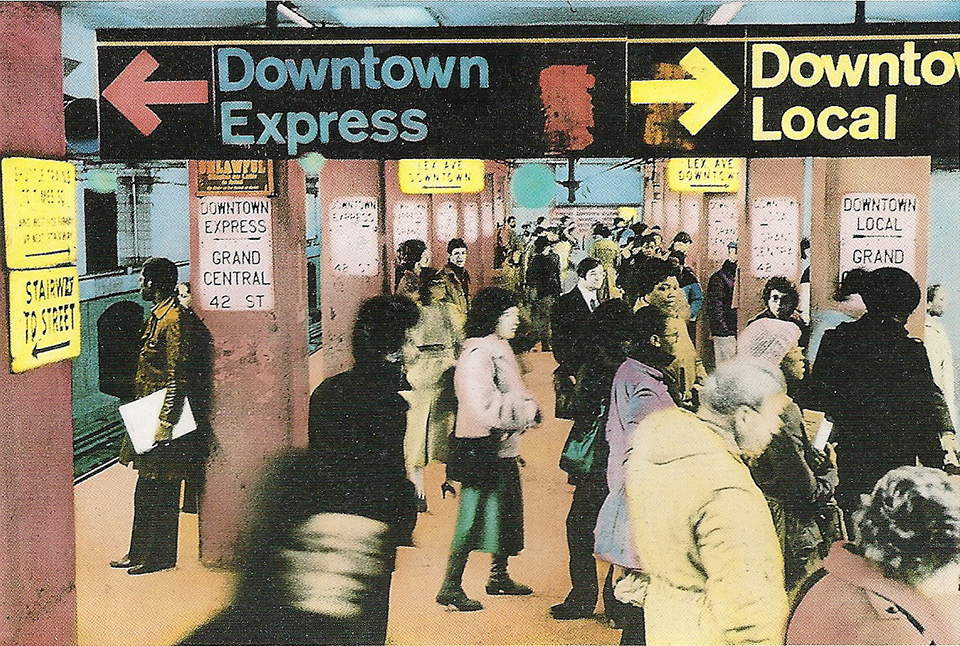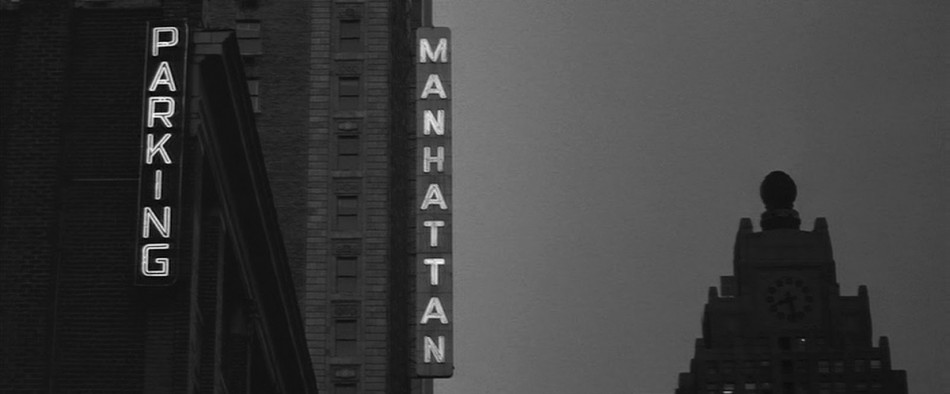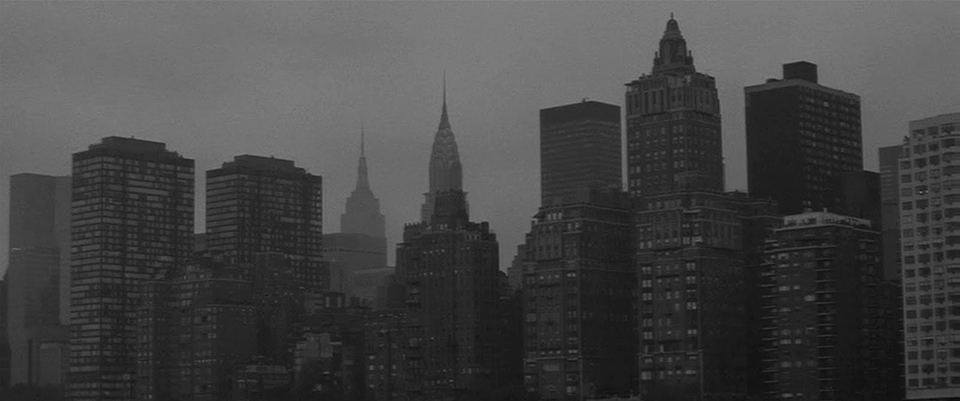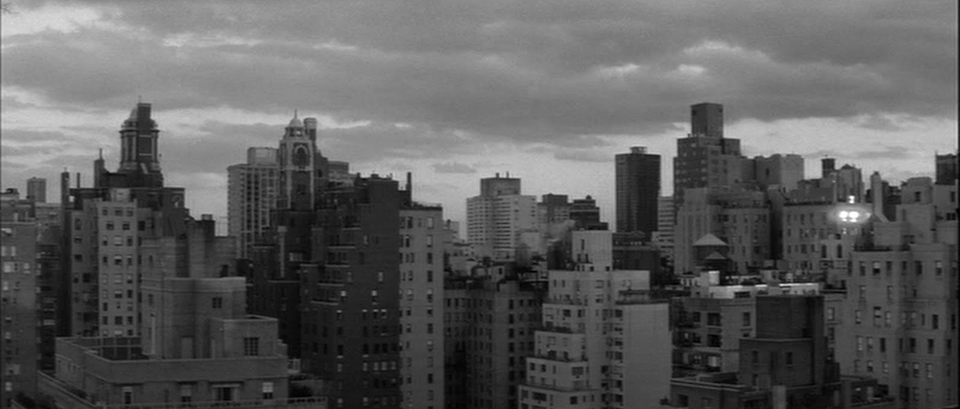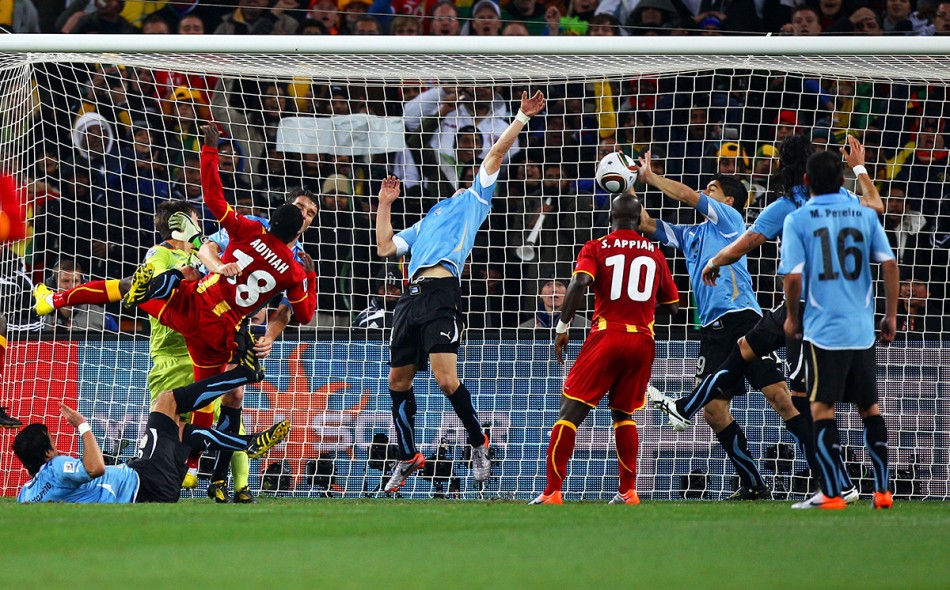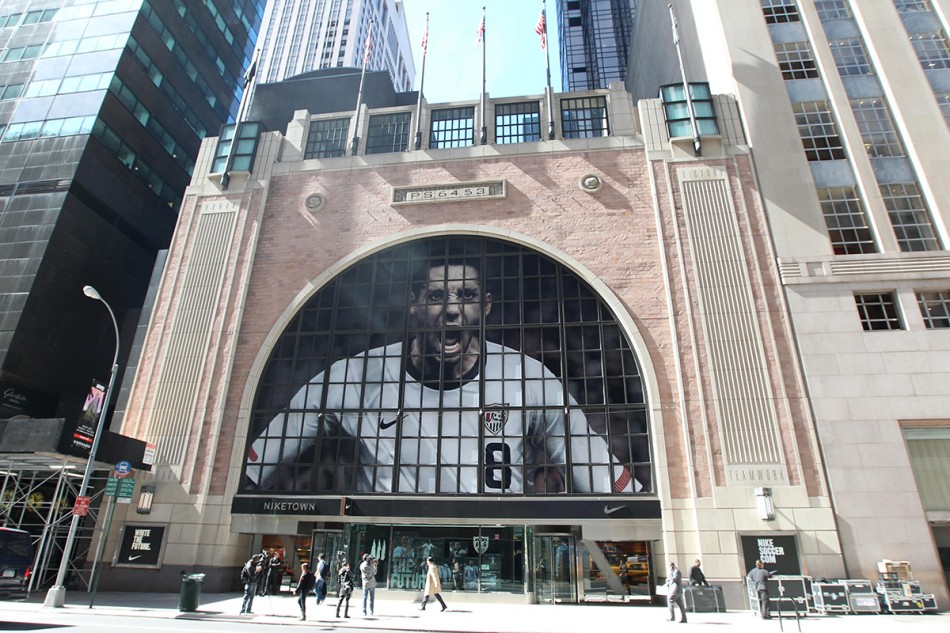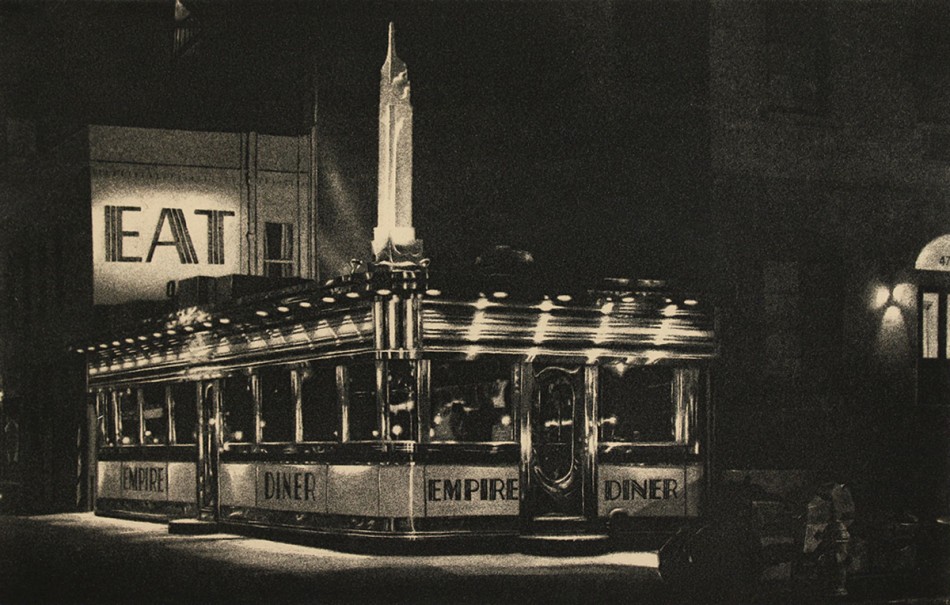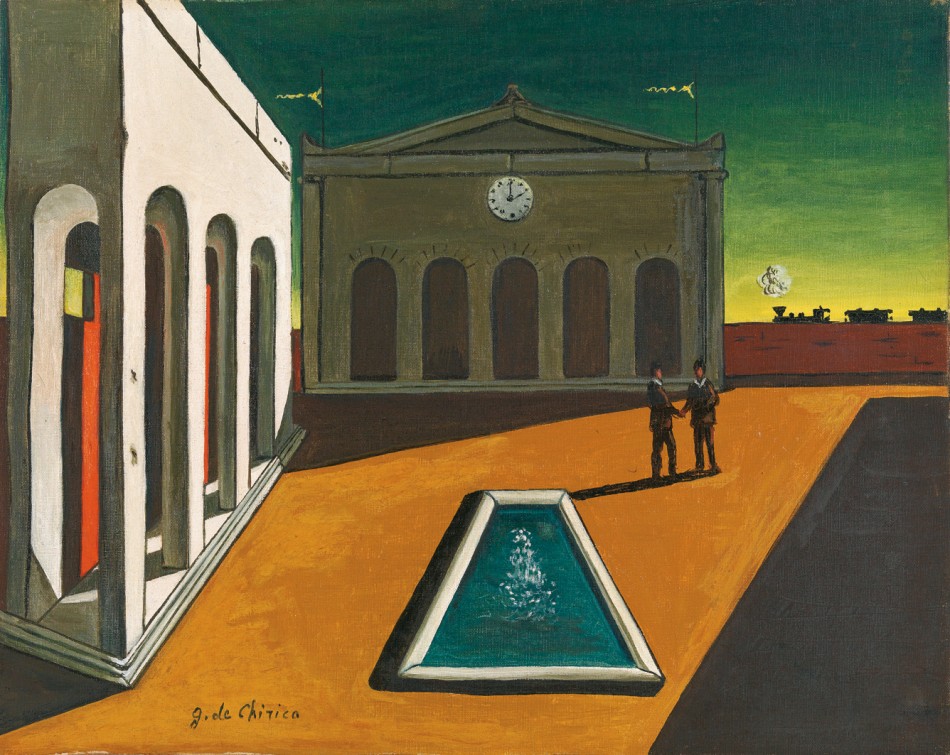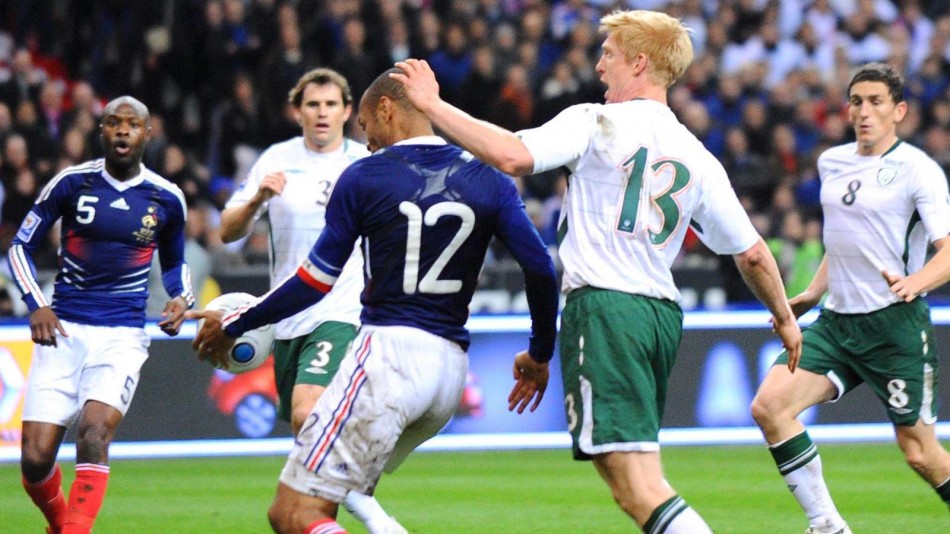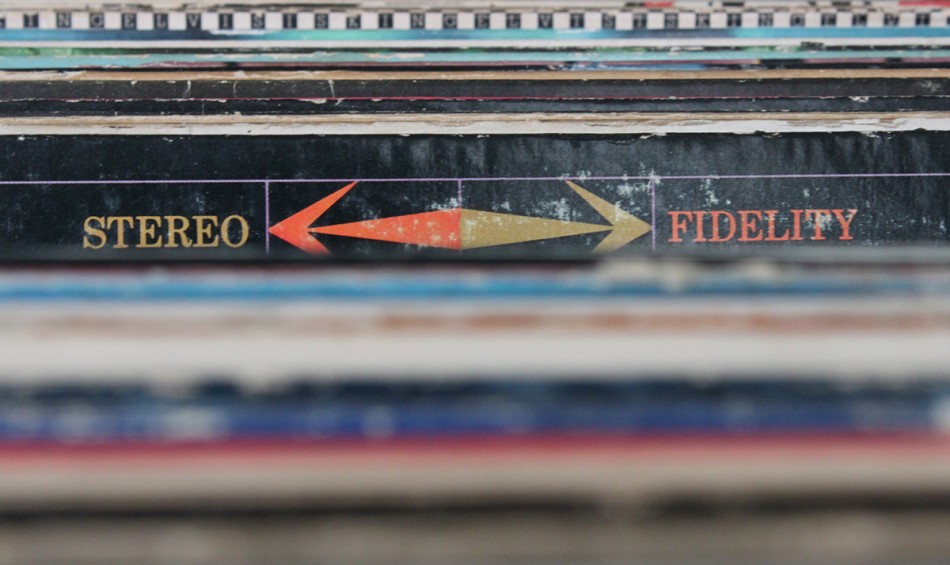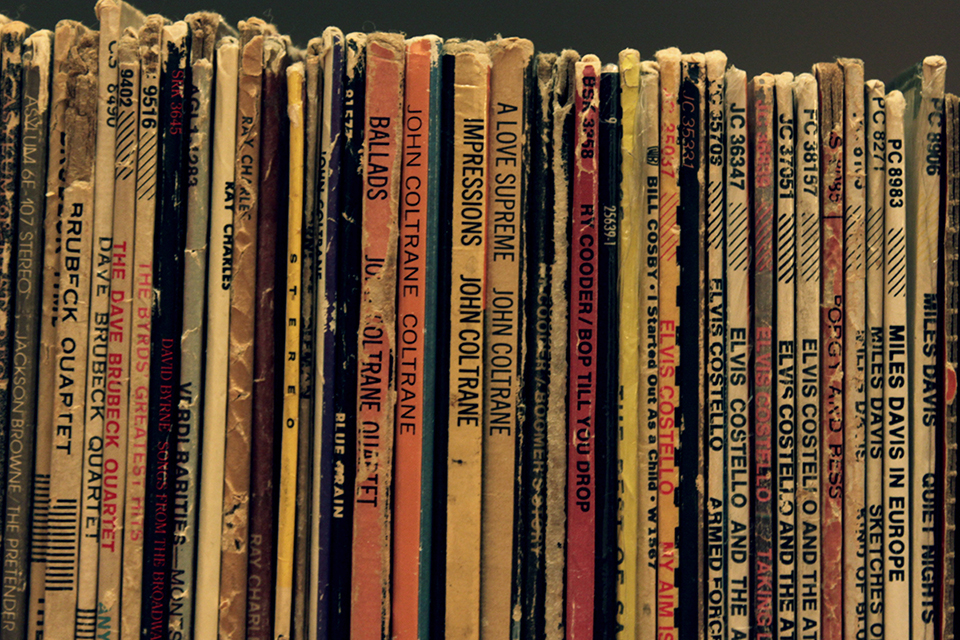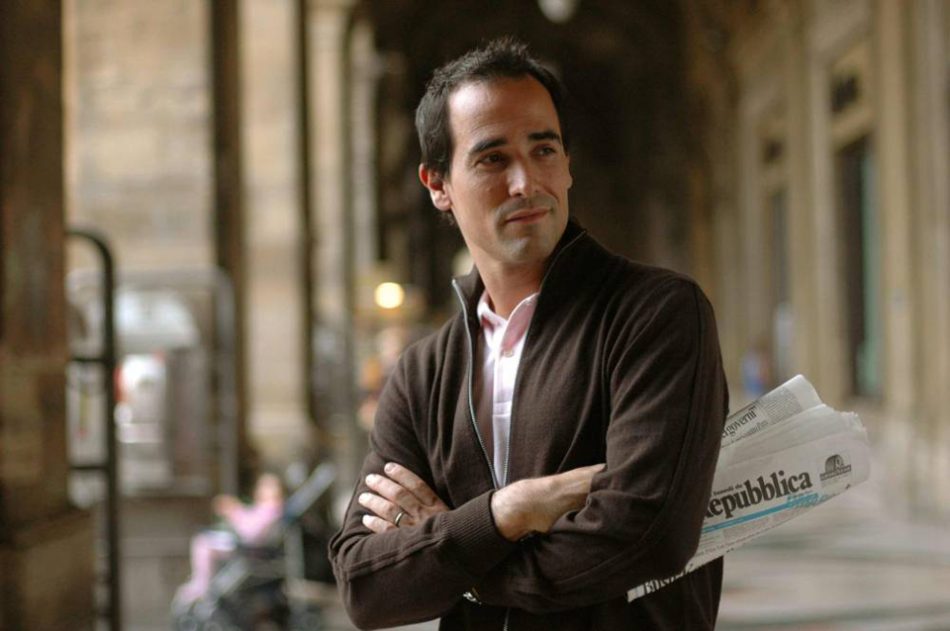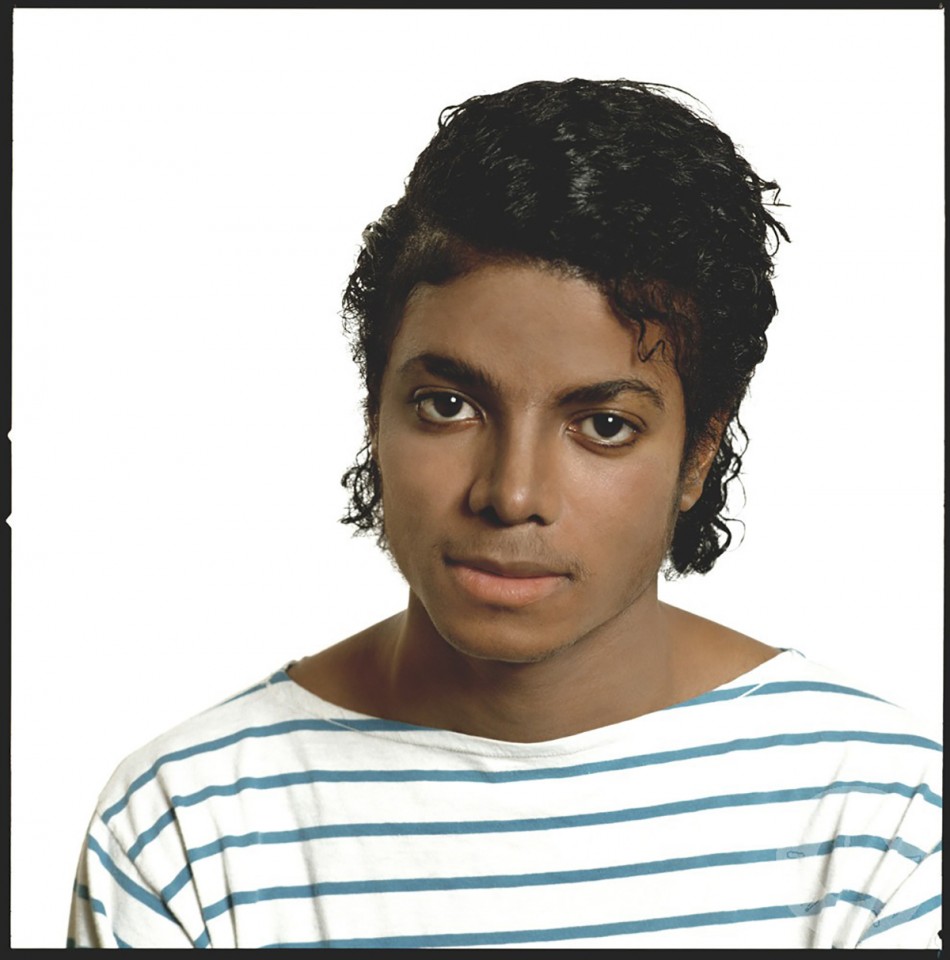The ultimate guide to Manhattan’s finest milk and seltzer beverages
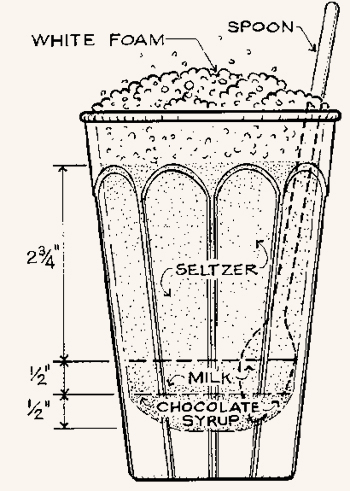
Most visitors to New York arrive keen to sample the city’s culinary delights, but while pretzels, bagels and jumbo deli sandwiches figure highly on many tourists’ food shopping lists, the egg cream is as foreign to foreigners as the Mets’ all-time roster. As intrinsically linked to New York as the humble hot-dog, the egg cream’s origins are as hazy as a humid Manhattan afternoon in July. The drink probably originated in the late 19th century, and before long had become for many New Yorkers the quintessential mid-century refreshment. One of the city’s favorite rock ‘n’ roll sons even penned this nostalgic ode to the drink.
The egg cream’s popularity may have waned in recent years due to its being a classic misnomer. Containing neither eggs nor cream, this sweet and frothy concoction is made solely of icy chilled milk, seltzer water and chocolate syrup (preferably in that order, although there are various schools of thought as to its proper preparation). Offering both the sweet taste of a good shake and the cool perfection of a cold soda, the egg cream is the perfect summertime quencher.
Having observed the rapid and at times unceremonious demise of some of Manhattan’s cultural heritage, I considered this an opportune moment to pay a visit to some of the city’s most beloved institutions — the diners, coffee shops and luncheonettes of yore – while they’re still around. With traditional soda fountain drinks currently being refashioned by so-called artisans for the hipster generation, I saw no better time to seek out the real deal. Thus began a nomadic odyssey in search of Manhattan’s finest egg creams, a citywide journey which took me to a bygone world of swivel stools, formica countertops and gruff middle-aged men in short-sleeved shirts. If my research tells me anything, it’s that even in 2011, the timeworn tradition of the egg cream is alive and well. After all, no-one’s going to write a song about the iced soy latte.
Below 14th Street
GEM SPA
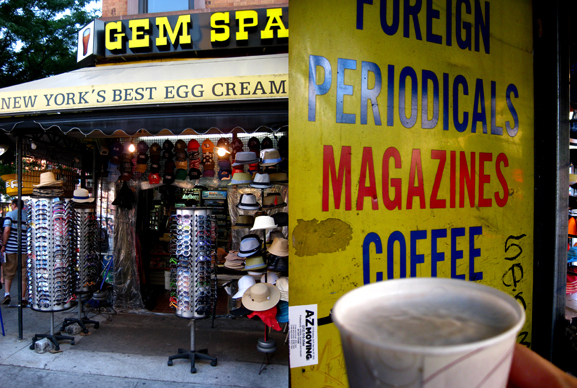
131 Second Avenue, 212-995-1866
Where better to start my project than at Gem Spa, the legendary St. Mark’s Place magazine store whose awning, sandwich board and a hand-drawn sign on the door all proclaim the superiority of its egg cream. This outlandish boast raised my expectations but after trying the much-vaunted creation it seems excessive: Gem Spa’s egg cream is a little too seltzery for my taste, and it loses points for the wax paper cup. But for $2.50 it’s an acceptable start.
B&H DAIRY
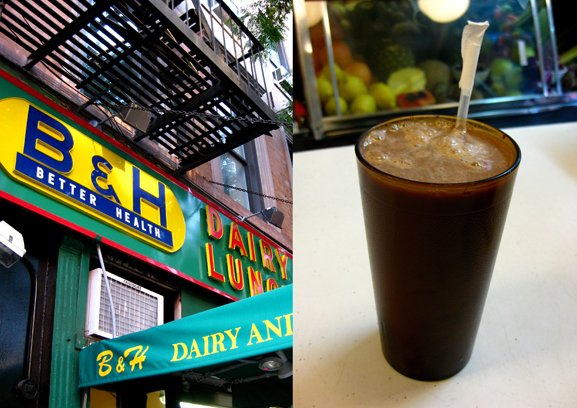
127 Second Avenue, 212-505-8065
A couple of doors down from Gem Spa sits this slither of a kosher vegetarian restaurant, whose retro sign promises “Better Health”. Indeed, B&H is renowned for its extensive juice bar menu; judging by my egg cream experience they don’t make a lot of them. Tasty but neither fizzy or frothy enough.
STAGE RESTAURANT
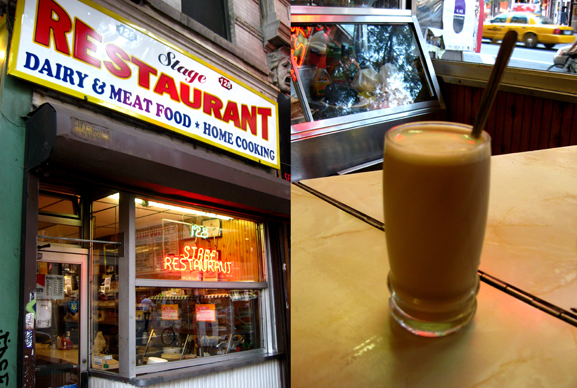
128 Second Avenue, 212-473-8614
Opposite B&H lies Stage Restaurant, directly next-door to the Orpheum Theater and a leftover from Second Avenue’s Yiddish Theater heyday. Many swear upon the use of Fox’s U-Bet Chocolate Syrup, but unusually, Stage uses Hershey’s for their egg cream, which is smooth but lacking in a frothy head.
VESELKA
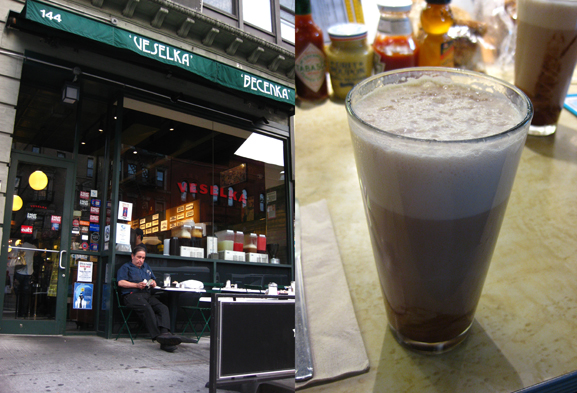
144 Second Avenue, 212-228-9682
This East Village institution was opened by Ukrainian immigrants in the 1950s (“Veselka” means “rainbow”). Today it has morphed into one of the neighborhood’s most popular 24-hour diner for those in search of borscht and pierogi. I used to live across the street; they used to give me discount coffee. The beautiful white froth of Veselka’s egg cream makes it the best on the block.
LITTLE POLAND
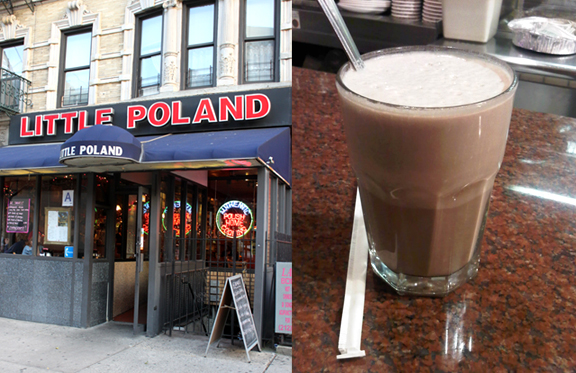
200 Second Avenue, 212-777-9728)
Despite the closure of Leshko’s, Teresa’s and Kiev in recent years, the East Village is still a great neighborhood for Eastern European old world charm. Little Poland has been doing business on Second Avenue near 12th Street since 1985. And after an afternoon spent browsing books at The Strand and LPs at Academy Records their egg cream is the perfect Cold War-era refreshment. It’s enough to make you forget the wall ever came down.
MOONSTRUCK DINER
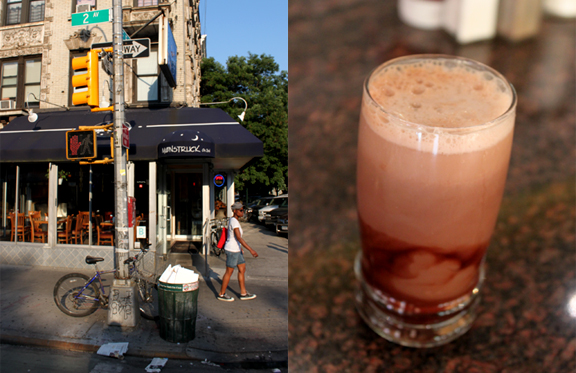
88 Second Avenue, 212-420-8050)
A short walk down Second Avenue brings me to one of Manhattan’s three Moonstruck Diners, this one located just around the corner from the NYPD’s 9th Precinct. The egg cream arrived quicker than a Ford Crown Victoria cruiser patrol car but turned out to be a little heavy on the chocolate syrup. Satisfying, yes, but sickly sweet.
ODESSA RESTAURANT
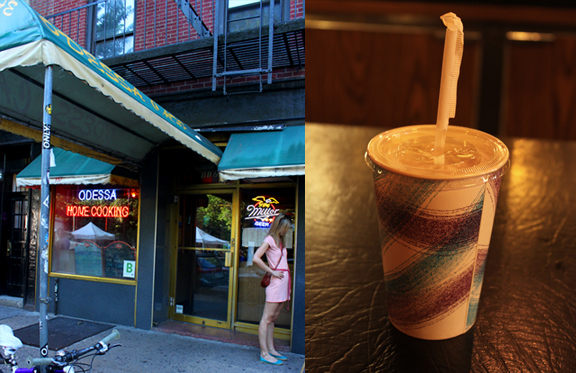
119 Avenue A, 212-253-1482
A wander into Alphabet City brings me to Odessa, another leftover from the neighborhood’s Eastern European past. Odessa is actually split in two: one side is a fairly non-descript diner, while the other is a dimly lit bar cluttered with kitschy objets that enhance the sense of having stepped into a timewarp. The egg cream arrived in a paper wax cup but I wasn’t complaining.
RAY’S CANDY
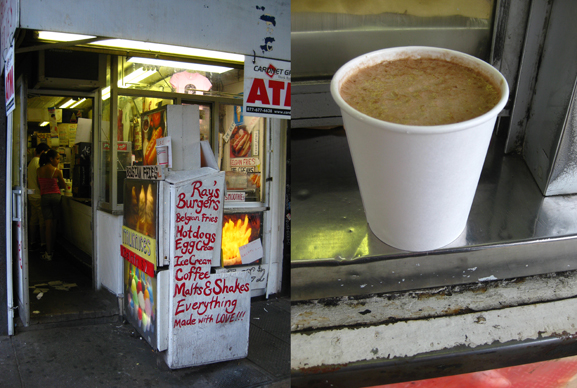
113 Avenue A (no phone number)
A block further down on Avenue A nestles Ray’s Candy, a somewhat shambolic hole-in-the-wall perennially on the brink of closure. At $1.50 for a small egg cream it’s the cheapest I’ve found, but it isn’t mixed well and the head is too bubbly. Meanwhile a “Save Ray’s” campaign spearheaded by the neighborhood blogosphere will keep Ray in business for another year.
YONAH SHIMMEL’S
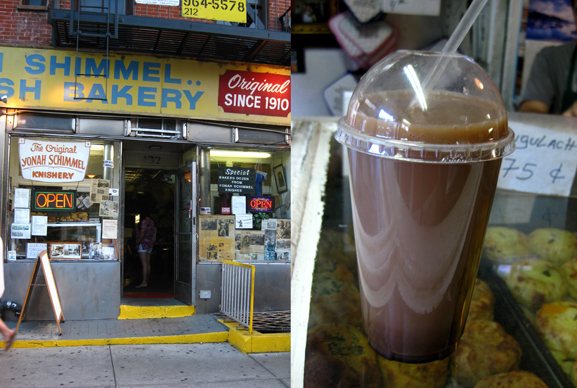
137 East Houston Street, 212-477-2858
Eastern European folklore abounds at Yonah Shimmel’s, where Lower East Siders have been lining up for knishes for a century. Unfortunately my highly disappointing egg cream experience did not reflect their hundred years of business. Arriving in a clear plastic cup with a conical lid and straw, the drink had no froth or fizz whatsoever and hardly any milk, essentially amounted to warm, flat, cloudy brown seltzer water. Needless to say I didn’t even finish it.
REMEDY DINER
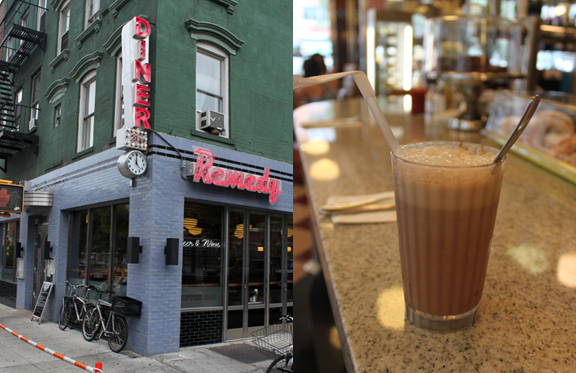
245 East Houston Street, 212-677-5110
As a native New Yorker Lady Gaga must know her diners. But not even a recent visit from Ms. Germanotta herself has been able transform this humble restaurant into a downtown hotspot, which is just as well. Stuck on an construction-heavy stretch of Houston Street, where hip Alphabet City meets the even hipper Lower East Side, this lovingly-refurbished eatery boasts the most stunning interior of any diner south of 14th Street. Feeling weary from the Saturday afternoon hoards, the egg cream was a refreshing remedy.
CUP & SAUCER
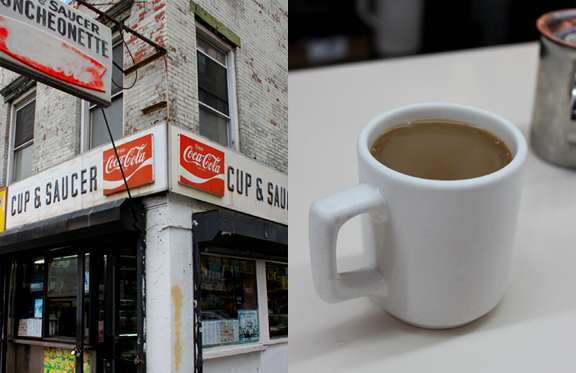
89 Canal Street, 212-925-3298
Reports of this Lower East Side mainstay’s imminent closure whisked me down to Chinatown to sample its egg cream before I was too late. So imagine my shock when my request was greeted with a blank stare, quickly followed by a less-than-helpful, “We don’t have those here.” Somewhat taken aback, I hastily ordered a cup of coffee (though no saucer).
PEARL DINER
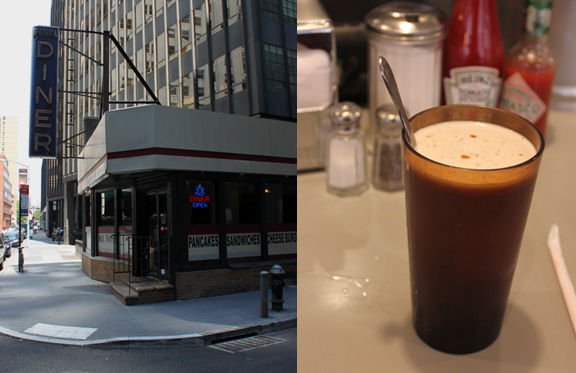
212 Pearl Street, 212-344-6620
Hiding amid the steely shadows of the Financial District, this tiny diner seems dwarfed by its nearby architecture. On weekdays it plays host to scores of bankers and brokers in need of a bite after a hard morning on the trading floor. On a Saturday afternoon the Financial District is a ghost town, but I’m happy to say Pearl’s egg cream, though a little chocolately, suggests its stock may still rise.
LANDMARK CAFE
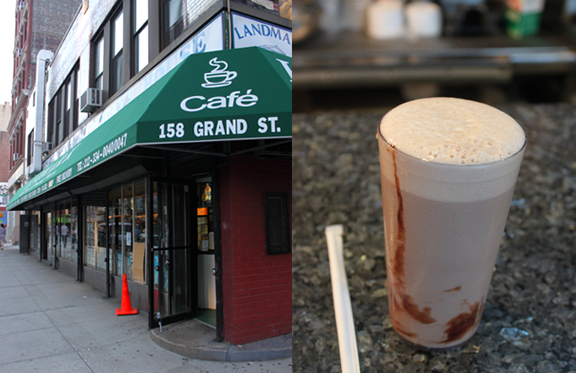
158 Grand Street, 212-334-0040
Landmark? More like no-man’s-land. This decidedly non-descript downtown pancake house and coffee shop finds itself precisely in the spot where SoHo, Little Italy and Chinatown all seem to simultaneously fizzle out. However, it’s been run by the same family in the same location since 1962, and also featured in the 1985 movie Desperately Seeking Susan. So what better place for a late-afternoon egg cream when you need a break from the swathes of shoppers and tourists.
SQUARE DINER
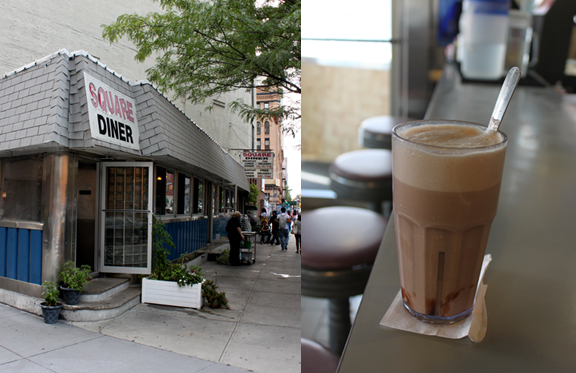
33 Leonard Street, 212-925-7188
The oddly-shaped Square Diner at Leonard and Varick has been under the same owner since 1971, and you can tell. This Tribeca hideaway is the real deal: wood-panelling, cubed glass, chrome window panels, the obligatory signed photos. The egg cream won’t win any awards — which is what makes it so perfect.
VANDAM DINER
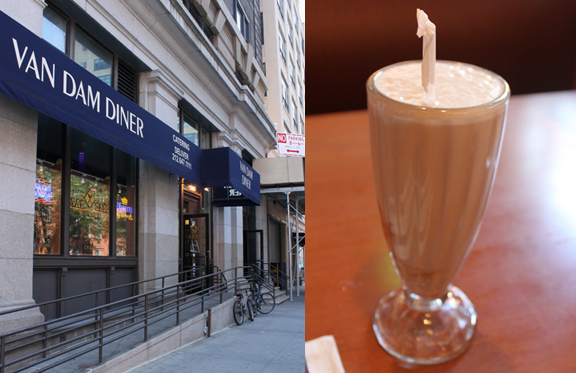
12 Vandam Street, 212-647-1111
Too west to be in SoHo, too north to be in Tribeca and too south to be in the Village, the Vandam Diner finds itself in a forgotten pocket of Manhattan on, you guessed it, Vandam Street. Inside the place is just as quiet as you might imagine, and the egg cream, though presented nicely, wasn’t anywhere near chocolately enough.
HUDSON DINER
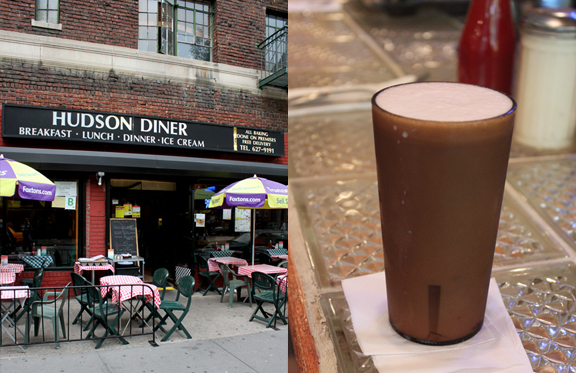
468 Hudson Street, 212-627-9191
On a quiet, leafy stretch of Hudson Street several blocks south of the West Village’s more raucous destinations, lies this quaint little diner. Outdoor seating with umbrellas, gingham tablecloths and vintage posters give the place a slight European vibe, which may explain why my egg cream was way too seltzery.
LA BONBONNIERE
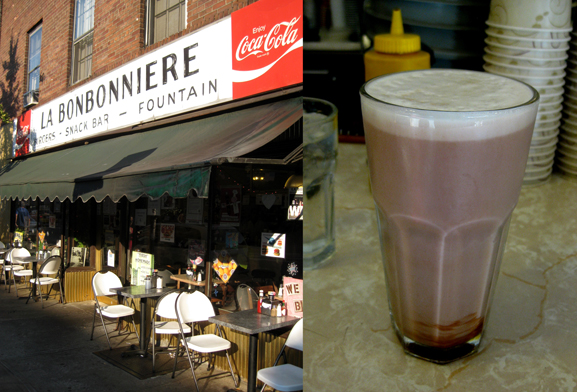
28 Eighth Avenue, 212-741-9266
The French-sounding name may invoke a little Village Bohemia, but this place is as all-American as they come. One of the West Village’s few remaining diners, this low-cost luncheonette has become a favorite of several actor’s actors who now reside in arguably Manhattan’s most desirable neighborhood. The egg cream doesn’t come cheap ($4.00) but the tall glass and smooth finish make it worth every penny.
WAVERLY RESTAURANT
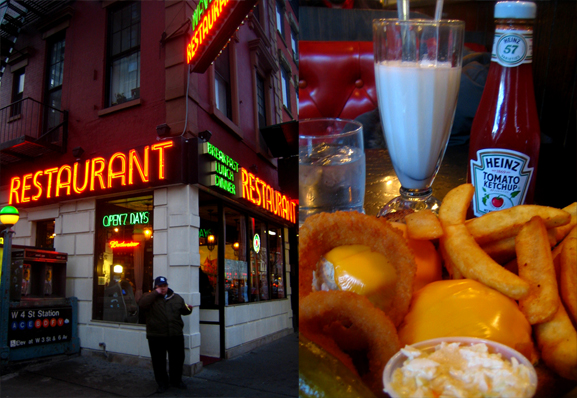
385 Sixth Avenue, 212-675-3181
This Greenwich Village mainstay boasts dated wood panelling and some of the best neon signage in the city. A little tired of the chocolate egg creams, I branched out and ordered a Brooklyn-style vanilla variation. It may have been just the the novelty, but the strange consistency of my drink did not sit well with my tuna melt.
WASHINGTON SQUARE DINER
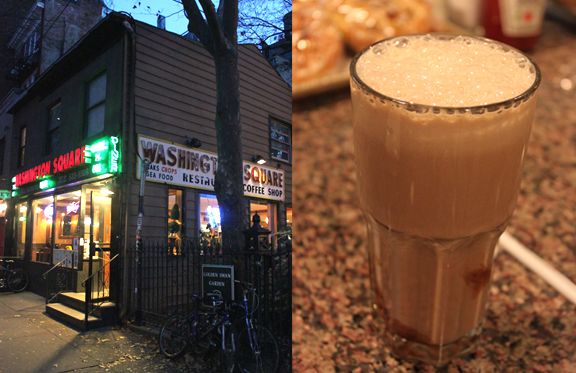
150 West 4th Street, 212-533-9306
Greenwich Village may not be what it used to be, but that doesn’t mean you can’t still get a proper egg cream at a proper diner. Just a stone’s throw from Washington Square, The Washington Square Diner was serving NYU students and dropouts alike long before this year’s crop of freshmen were conceived. And following the recent completion of a preposterous (and preposterously expensive) refurbishment of the park, it’s nice to know that some things don’t change.
UNIVERSITY RESTAURANT

101 University Place, 212-475-7727
More unexpected barware at this favorite NYU hangout, my egg cream arrived in a hefty beer tankard. A solid effort with a huge head of foam, it certainly quenched my afternoon thirst.
COZY SOUP ‘N’ BURGER
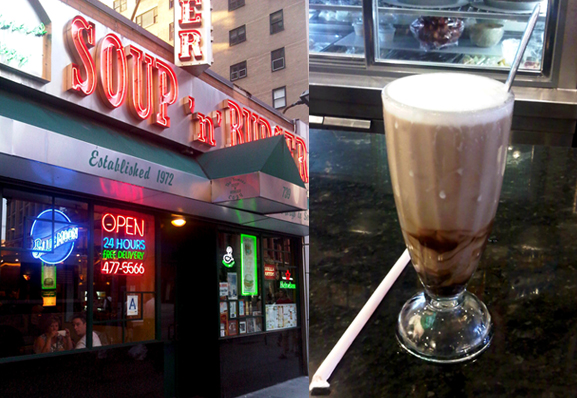
739 Broadway, 212-477-5566
According to the menu Cozy’s hearty staples had a hand in Greek mythology, which is more than a tad misleading since this Broadway diner only opened in 1972. Catering to tourists and NYU kids, plus the occasional celebrity (Michael J. Fox is a fan), Cozy handily finds itself at the nexus of several neighborhoods. Attentive service and a good egg cream, too.
Between 14th Street and 42nd Street
COOPERTOWN DINER
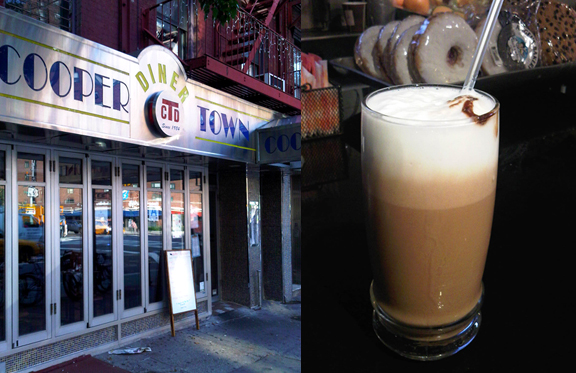
339 First Avenue, 212-677-9287
This First Avenue diner takes its name from its proximity to the nearby Peter Cooper Village housing complex. Coopertown is typical of the modern diner, right down to its flashy seat cushions, spotless cleanliness and flatscreen TV. The egg cream was flavorful enough, and I downed it while watching some beach soccer.
GRAMERCY CAFÉ
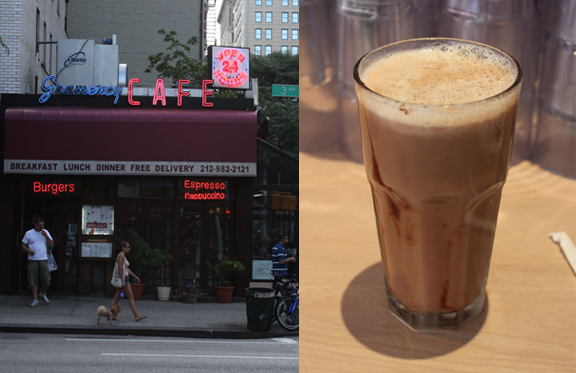
184 Third Avenue, 212-982-2121
Though I pass this Gramercy diner every day on the way to work, I had never been inside until one warm afternoon after a particularly gruelling day at the office. The egg cream was a solid effort that quenched my thirst and more importantly took my mind off the day job — at least for a few minutes.
JOE JUNIOR’S RESTAURANT
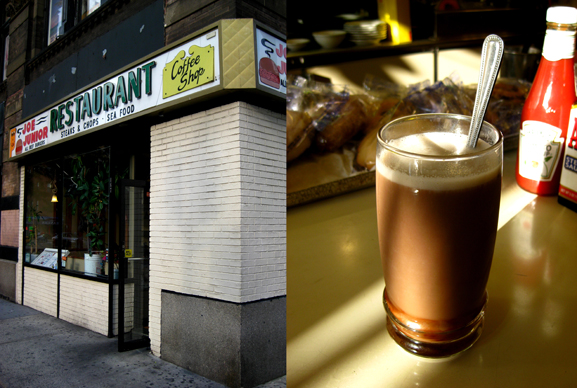
167 Third Avenue, 212-473-5150
Though I wasn’t around in 1965, Joe Junior’s looks like a restaurant that was frozen in time at some point during the middle of the last century. Even the other patrons don’t seem to have walked in from 2010 New York. The egg cream is dark and tasty, but not quite frothy enough. Not to be confused with Joe Jr.’s in Greenwich Village (which closed in 2009).
LYRIC DINER
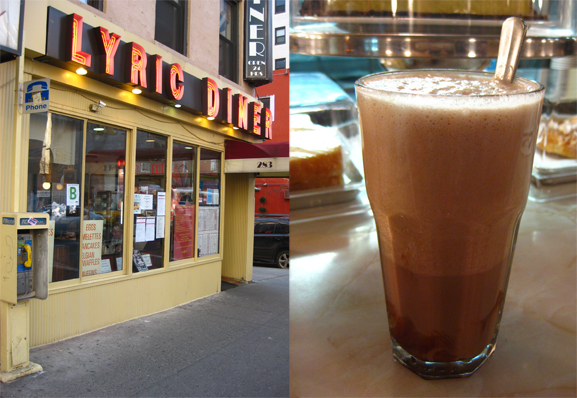
283 Third Avenue, 212-253-2222
The third stop on this stretch of Third Avenue, Lyric Diner is always packed with hungry cadets from the nearby Police Academy. Unsurprisingly the Lyric’s egg cream does not disappoint: smooth, frothy and served in a real glass, I’m more than happy to sing its praises.
COSMOS DINER
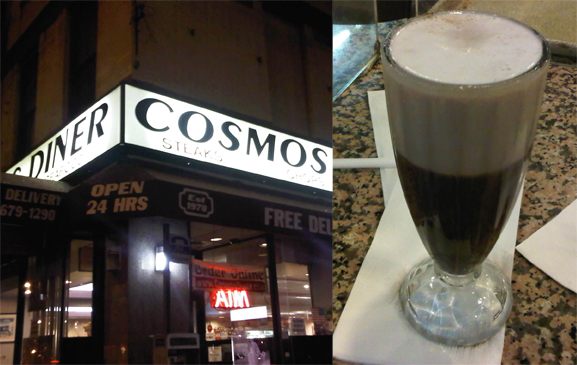
395 Second Avenue, 212-679-1290
Owner Mike Siderakis has been feeding SVA students at his diner on the corner of Second Avenue and 23rd Street since 1978. Most diners use a pump-action syrup dispenser but Cosmos keeps theirs in an enormous bottle. As a result my egg cream was by far the chocolatiest I’ve ever tasted, but so expertly mixed that the drink/foam stratum was out of this world. Beautiful, if a little sweet.
ORION DINER & GRILL
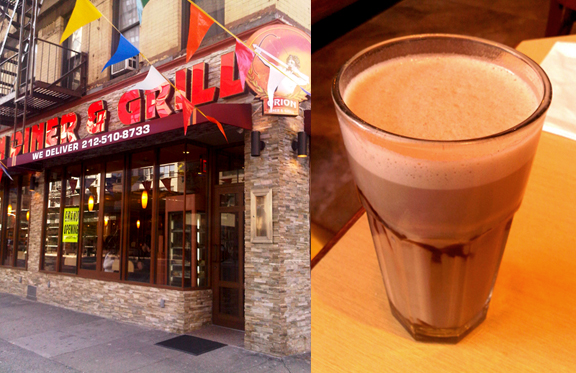
395 Second Avenue, 212-510-8733 (formerly Cosmos Diner)
It seems not a month goes by in New York without a beloved coffee shop or diner closing to make way for yet another bank or fast-food joint. So when the Cosmos Diner shuttered after 33 years I feared the worst. To my pleasant surprise the space has now become the Orion Diner, thus maintaining its interstellar theme. Not two days after the Grand Opening I was happy to find the place already packed at lunch. The egg cream was spot on, though they were already out of rye bread on day two. But hey, at least it’s not a Subway.
EAST SIDE CAFE
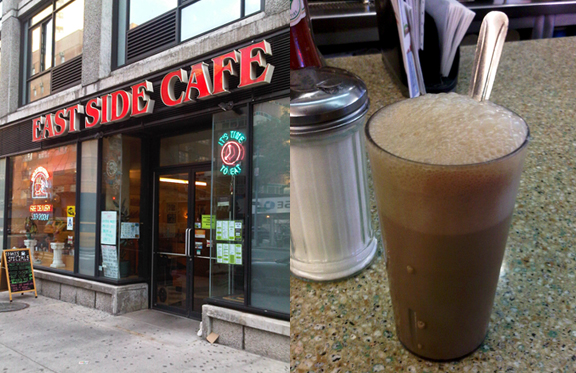
352 East 23rd Street, 212-533-2034
They say good things come to those who wait, but that wasn’t the case at the East Side Cafe, where I sat for twenty minutes before finally being presented with my egg cream. Chaos reigned as a stressed out manager frantically answered to-go orders with one hand and rang up credit cards with the other, while a pack of small children scurried about the restaurant. The delay had been caused by a lack of seltzer, he explained to me, before eventually sending a cook out to fetch an emergency bottle of Canada Dry. By the time I got my drink I wasn’t thirsty any more.
SUNFLOWER DINER
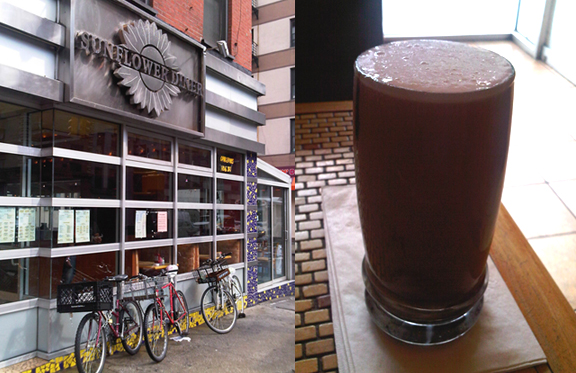
359 Third Avenue, 212-532-8171
During a tropical storm I took shelter at this Murray Hill diner, nestled quietly amidst the ethnic restaurants and frat bars that proliferate in this student-heavy neighborhood. The Sunflower is blessed with floor-to-ceiling windows and some interesting metalwork facade, but my (slightly overflowing) egg cream was predictably average.
MOONSTRUCK DINER
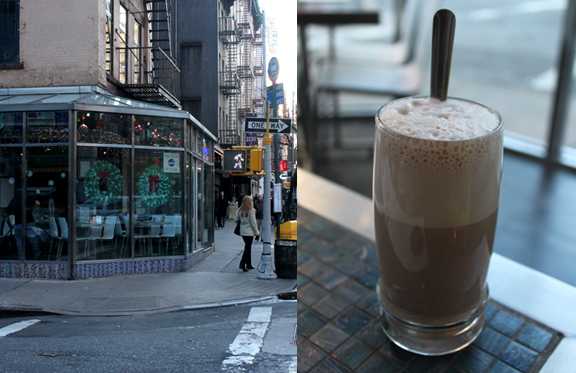
449 Third Avenue, 212-213-1100
Unlike its sister restaurant in the East Village, this Murray Hill outpost of Moonstruck boasts an elaborate decor and wraparound windows offering splendid views of the Chrysler Building. I sauntered over here on a slow day at work to find an atmosphere chillier than my Park Avenue office. But the egg cream was well worth it.
SARGE’S DELI & RESTAURANT
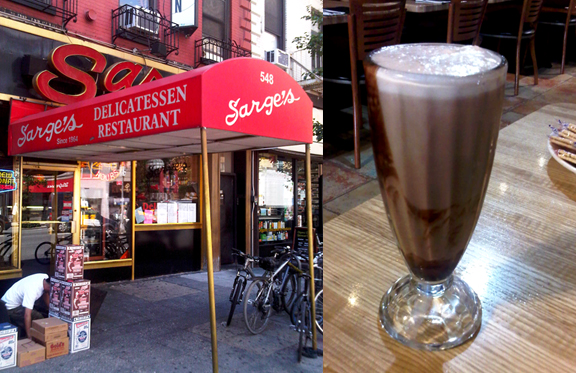
548 Third Avenue, 212-679-0442
Named after a former police sergeant, this family-operated deli has been in business since 1964, and is currently the only New York deli to cure its own corned beef and pastrami on the premises. The interior is dark, with stained glass lamps and leather banquettes. Even the signed celebrity photos on the walls seem to belong to another era — the only one I recognized was Telly Savalas. My egg cream was enhanced by the experience rather than vice versa.
MURRAY HILL DINER
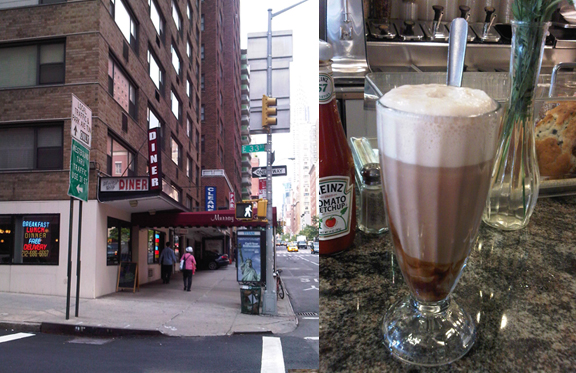
222 Lexington Avenue, 212-686-6667
Though there exists another Murray Hill Diner (on Murray Street in the Financial District), only one of them is in Murray Hill: if you stand on the corner outside you can see the Empire State Building and Chrysler Building simultaneously! Friendly service and a solid egg cream more than make up for the hushed atmosphere and unfashionable neighborhood.
SCOTTY’S DINER
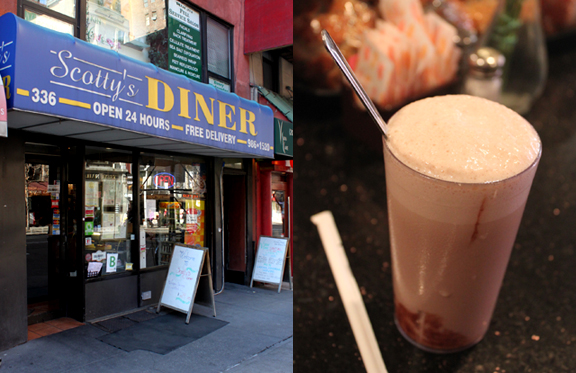
336 Lexington Avenue, 212-986-1520
A warm and sunny afternoon is all the incentive I need to get out of the office these days, and this particular leg-stretching stroll brought me to Scotty’s, an unassuming Greek diner in the shadow of the gleaming Chrysler Building. My egg cream was predictably fine, though the service was a little inattentive: while I was there the entire staff was preoccupied with fixing the phone/credit card machine that evidently was on the blink.
NATURALLY TASTY
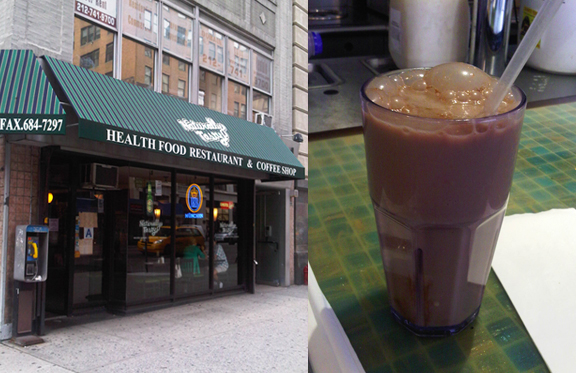
234 Fifth Avenue, 212-725-1804
Who knew an egg cream could be so stressful? At Naturally Tasty, an oddly-named coffee shop appropriately located opposite the Museum of Sex, my apparently harmless request managed to spark a heated argument between waitress and manager of the “I thought you were making it”/”Well, you made it last time” variety. Perhaps I should have stepped in and made it myself, because when my egg cream finally arrived I can see why they’d been so reluctant: lukewarm, fizzy water, with not enough milk and no foam whatsoever. A disastrous experience that set me back $3.10.
EISENBERG’S SANDWICH SHOP
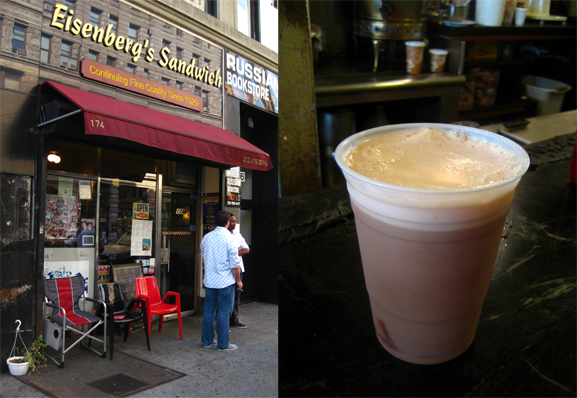
174 Fifth Avenue, 212-675-5096
From its hardly welcoming sandwich board out front (“you either get it or you don’t”) to the fast-paced repartee of its staff, Eisenberg’s is arguably the quintessential Manhattan lunch-stop. This place has been serving the Flatiron work crowd since 1929; today owner Josh Konecky maintains its no-frills, “no wraps” vibe. The wall of fame is cluttered with photographs of a variety of New York-based actors (including one of Jeff Goldblum working the grill). Its proximity to my workplace means in warmer months Eisenberg’s is my go-to destination for a mid-afternoon egg cream. With a froth so dense that peaks almost form, the egg cream is best paired with their exceptional tuna melt.
GOOD STUFF DINER
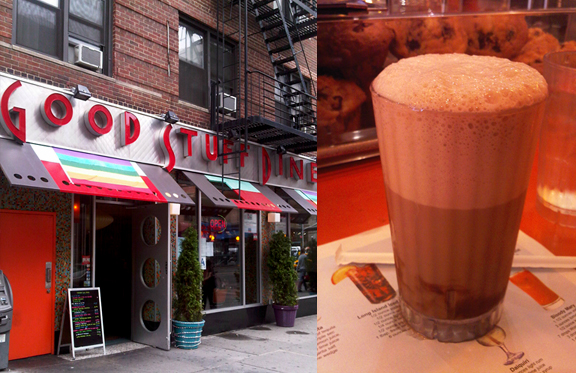
109 West 14th Street, 212-929-2555
Unlike many of the restaurants on this list, the Good Stuff Diner can at least boast an interior design job that was completed this side of the Reagan administration: its chic lighting appendages and funky chairs are more CB2 than WWII. Despite the modern decor, the egg cream is an old fashioned delight, with a hefty foam that was still there after I’d left.
HOLLYWOOD DINER

574 Sixth Avenue, 212-691-8465
The Hollywood Diner is a celebration of Tinseltown on Sixth Avenue: various movie posters clutter the walls while epic sandwiches named after stars of the screen pepper the menu. The egg cream is hardly worthy of an Oscar; perhaps more akin a crowd-pleasing holiday blockbuster: big and schmaltzy, it satisfies in all the right places.
RIDGEWAY DINER
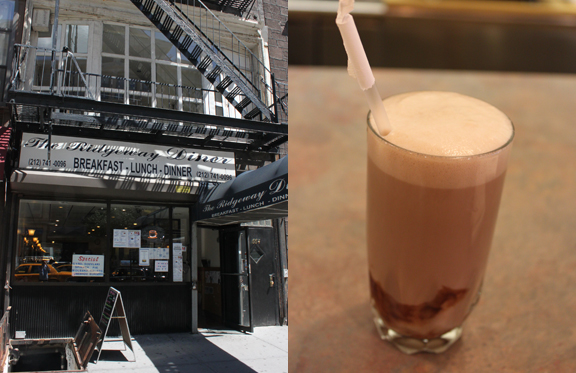
664 Sixth Avenue, 212-741-0096
I sometimes enjoy those quiet, unassuming diners where people barely speak to each other, although the atmosphere at the Ridgeway is so hushed the city morgue would seem positively jumping in comparison. The egg cream is fine, if a little sterile, and I was happy to get back into the warmth of the Sixth Avenue sun.
MALIBU DINER
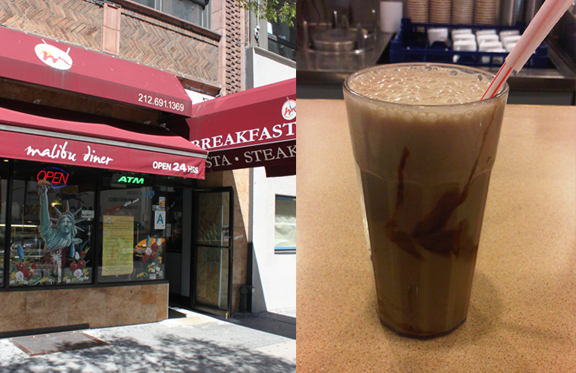
163 West 23rd Street, 212-691-1369
Don’t let the name confuse you — this Chelsea favorite is 100% East Coast. It also happens to be situated directly below my yoga studio, perfect for some pancakes post-pilates. I stopped by on my way to class: the egg cream was satisfying enough but did not make crow pose any easier.
CHELSEA GALLERY DINER
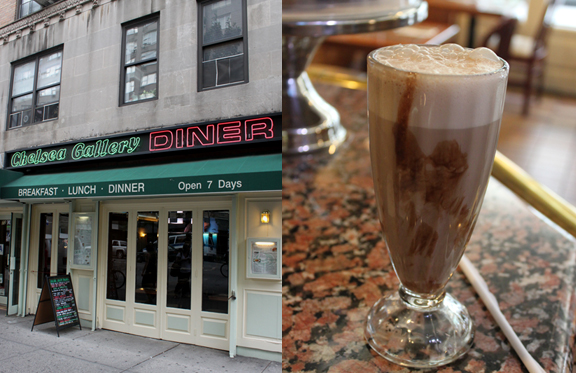
72 Seventh Avenue, 212-691-5200
Art lovers, don’t let the name fool you. This is a classic example of a new breed of upscale diners: a giant aquarium dominates the room while a Sony flatscreen booms CNN. My egg cream was fine if nothing remarkable, which made the fact that it cost almost four dollars all the more displeasing.
STAR ON 18 DINER
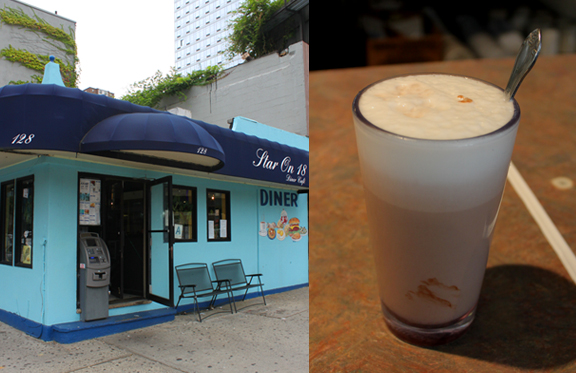
128 Tenth Avenue, 212-366-0994
New York has a strong history of breathing new life into the defunct. And while the High Line has given us a chance to enjoy Chelsea from a new vantage point, its effect on Tenth Avenue businesses has been less well-documented. This elevated railroad turned afternoon stroll destination has resulted in the arrival of a different clientele in the neighborhood, particularly on weekends, so it’s pleasantly surprising to see the Star on 18 Diner still in good shape. The egg cream has too much seltzer, but is nowhere near as watered-down as the faux restaurant that now appropriates the Empire Diner’s glory a couple of blocks further north.
CHELSEA SQUARE RESTAURANT
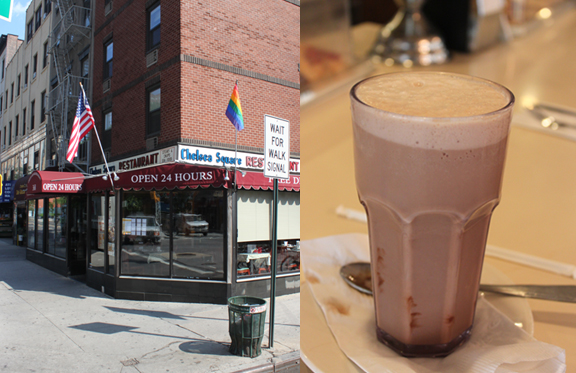
368 West 23rd Street, 212-691-5400
Despite some recent high-profile closures Chelsea remains something of a diner stronghold: this sleepy, wood-panelled joint sits directly opposite another outpost of the Moonstruck Diner. Under the watchful gaze of a signed photograph of Al Pacino (circa Sea of Love), I downed what was arguably the largest egg cream I’ve ever seen. Big, yes, but somehow short on substance.
MOONSTRUCK DINER
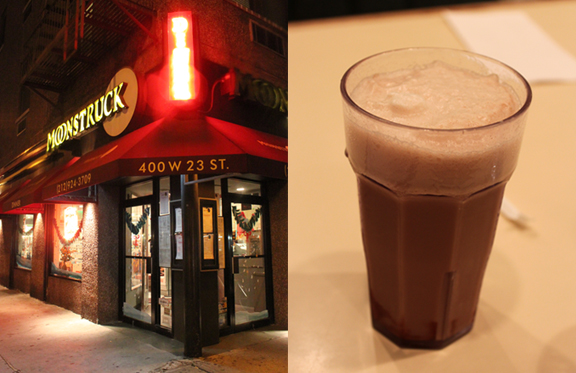
400 West 23rd Street, 212-924-3709
Another Moonstruck Diner? If you’re getting confused I don’t blame you. There is indeed a proliferation of Manhattan diners bearing this name — I wonder if they all sprung up following the success of the Cher movie? However, unlike the pair of restaurants on Second and Third Avenues, this Chelsea version is completely independently owned and unrelated to its East Side namesakes. Located opposite the slightly more ramshackle Chesea Square Restaurant, Moonstruck is nothing more than just your typical diner. The same can be said for its egg cream (and I mean that in a good way).
JOHNY’S GRILL & LUNCHEONETTE

124 West 25th Street, 212-243-6230
I first came across the this greasy hole-in-the-wall early one Saturday morning after a party at a friend’s Chelsea loft. Turns out Johny’s (with one ‘N’) is just as popular on a weekday lunchtime, where it apparently does a handy to-go business. My egg cream included a first: I was left the can of seltzer, giving me complete control over the mixing ratios. In the event it was already mixed to perfection, and that thick head remained until the very end, even after a seltzer top-up.
ANDREW’S COFFEE SHOP
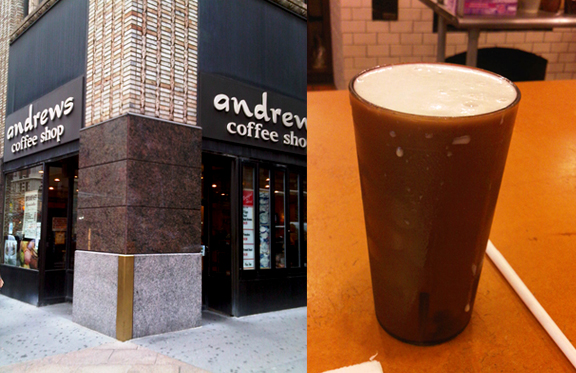
463 Seventh Avenue, 212-695-1962
This mini-chain perfectly sympolizes the demise of the New York coffee shop. Andrew Zamel, a Palestinian immigrant who came to the city in 1960, began opening coffee shops in 1963. At one point there were 15 such establishments bearing his name; by 1993 there were eight. Now just one remains with two having closed in the last year. Benefiting from its proximity to Penn Station and Macy’s, this last hold-out is probably the only coffee shop I’ve ever seen with a fully-working pizza oven. No such surprises
in the egg cream department though.
STAGE DOOR RESTAURANT & DELICATESSEN
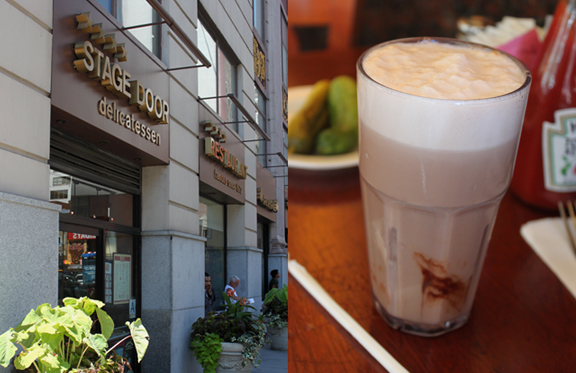
5 Penn Plaza #1, 212-868-9655
Stage Door is to delis what Ray’s is to pizza: this spotless diner had been “famous” since 1972, while the Stage Door Deli on Vesey Street claims to be the “original”. Across the street from Manhattan’s General Post Office on Eighth Avenue and just steps from Madison Square Garden, it’s a regular destination for commiserating Knick fans. Sadly the atmosphere is more chain hotel than authentic coffee shop, and my egg cream suffered for it.
TICK-TOCK DINER
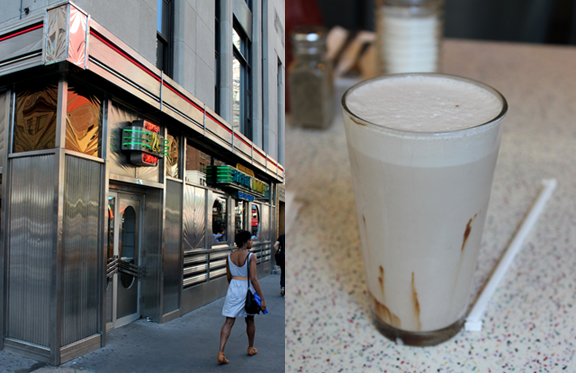
481 Eighth Avenue, 212-268-8444
The Tick-Tock Diner is a midtown marvel, a wonder in chrome that makes you wish you’d been born half a century earlier. I was surprised to learn then that this bustling all-night establishment’s gleaming exterior is but a replica of an the original, located in Clifton, NJ. This branch didn’t open until 1997. Putting my disappointment aside, I ordered the egg cream, which apparently comes “our way” — which evidently means the almost total exclusion of chocolate syrup. Milk and seltzer water? No thanks.
SKYLIGHT DINER
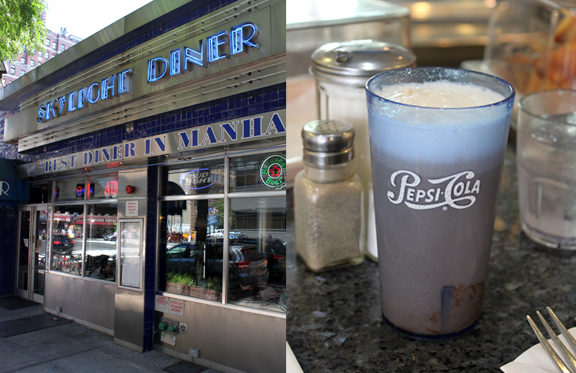
402 West 34th Street, 212-244-0395
On a block that once sang to the tune of buzzing neon (the Cheyenne Diner was once around the corner), this Hell’s Kitchen hold-out is everything you want in a diner, despite its relative youth (it’s been operated by the current owners since 1996). Lousy neighborhood, nice chrome, friendly banter and a tasty egg cream (in a Pepsi-Cola cup), even the sign on the Skylight’s exterior sign reads “Best Diner in Manhattan”. It’s hard to argue.
Above 42nd Street
MARKET DINER
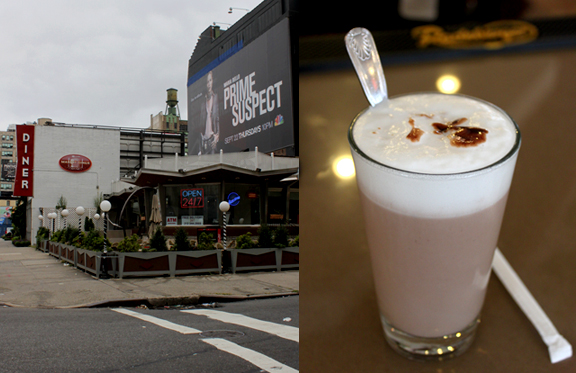
572 Eleventh Avenue, 212-244-2888
Originally opened in 1962, this Hell’s Kitchen hangout was famously patronized by West Side mobsters and Frank Sinatra, while a nightclub called Big City Diner operated in the basement. Like the Empire Diner, it was also a favorite subject for photorealist painter John Baeder. The Market Diner abruptly closed in 2006 only to reopen two years later as a faithful yet conservative version of its storied former self — more Il Divo than the Rat Pack. Much like the egg cream, which had a totally unfamiliar chocolate flavor, leading me to assume the surreptitious use of Hershey’s, or even Bosco.
WESTWAY DINER
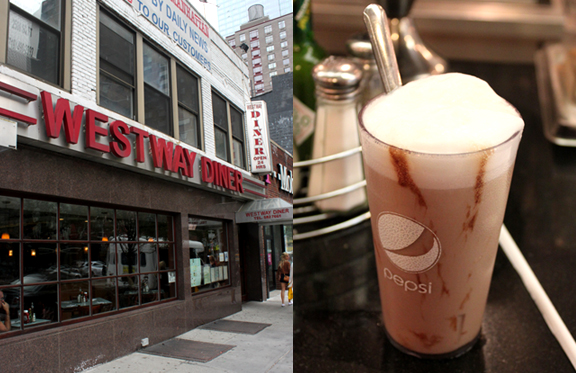
614 Ninth Avenue, 212-315-9104
According to the gigantic sign plastered across the building, the Westway was voted “Best Diner in Manhattan” by Daily News readers. (Didn’t the Skylight Diner already claim that title? I’m starting to doubt just how official these rankings are.) Once inside I questioned if the survey had been rigged, as it’s hard to see what Westway’s eager voters had fallen in love with. Meanhwhile, Manhattan’s West Side seems to be currently suffering a seltzer shortage, as my (freezing cold) egg cream was the third in the area to served with a stingy dose of chocolate syrup.
STAGE DELI
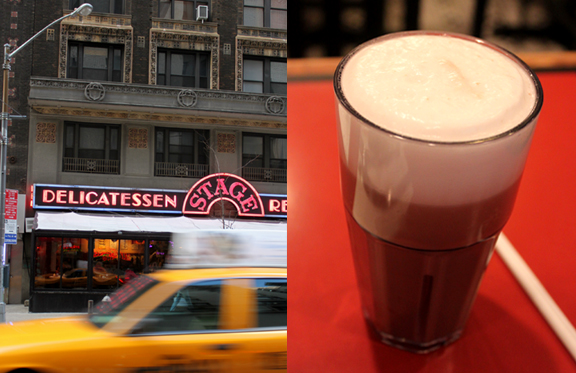
834 Seventh Avenue, 212-245-7850
Famed for its ample portions (I once had a slice of cheesecake here and had to take a cab home), this Theater District classic is a common pit-stop for tourists to eat (and photograph) a humongous sandwich named after a Broadway star. I played things safe with an egg cream, which looked and tasted like a million bucks, proving that there really is no business like show business.
LOU’S CAFE
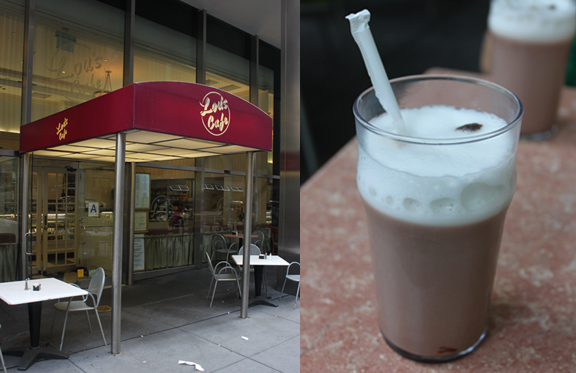
1301 Sixth Avenue, 212-581-3785
Located just steps from the Museum of Modern Art, Lou’s Cafe is a natural stop for weary museum-goers (though, oddly, I never once visited when I worked at the museum). The egg cream is unsurprisingly pricey but hardly the modern masterpiece, arriving in an English style pint glass with a nice foam that lasted all of three seconds. More Pop-Art than Post-Impressionist.
ASTRO RESTAURANT
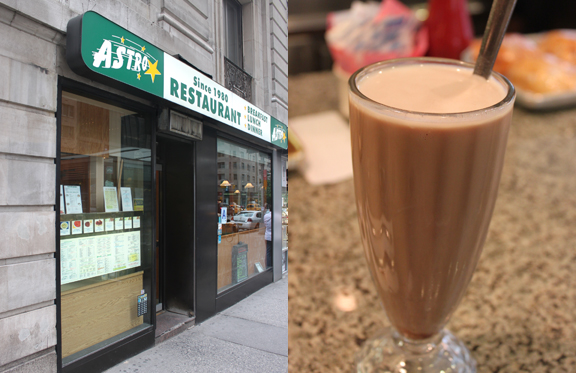
1361 Sixth Avenue, 212-489-6284
This Sixth Avenue diner has been in business since 1980, making it a year older than the first space shuttle launch! But Astro’s egg cream is neither a nod to the golden age of space travel nor a giant leap for mankind. Rather, it’s just another expensive midtown drink with a short-lived foam.
PRIME BURGER
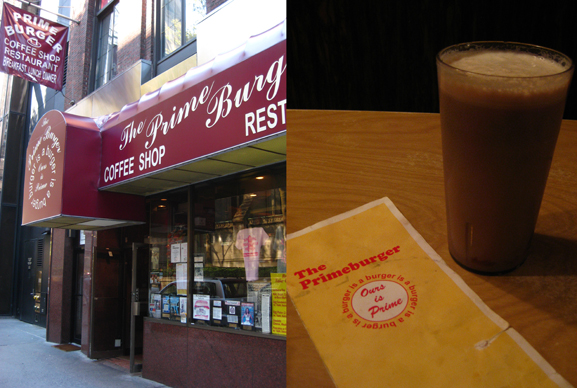
5 East 51st Street, 212-759-4730
My egg cream jaunt has afforded me some fun insights into Manhattan’s erstwhile eateries, but none seem such a time-warp as this midtown jewel, worth a visit for the décor alone. The egg cream – frothy enough and served in a plastic cup — isn’t bad either.
NEW YORK LUNCHEONETTE
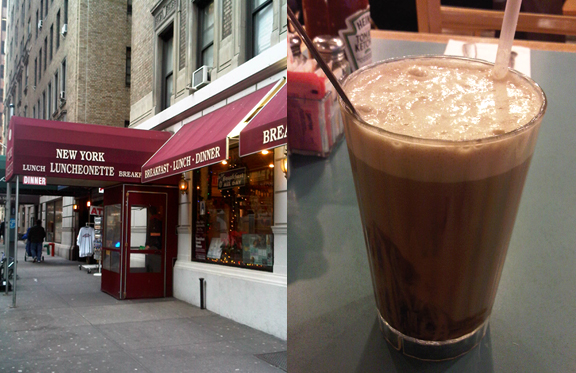
135 E 50th Street, 212-838-0165
One recent Friday lunchtime I unexpectedly found myself up in Midtown, and so decided to take advantage of my whereabouts to sample another egg cream. The unimaginatively named New York Luncheonette is a fully-fledged diner, with plenty of seating and large murals, though somewhat lacking in character. The egg cream was OK.
MADISON RESTAURANT
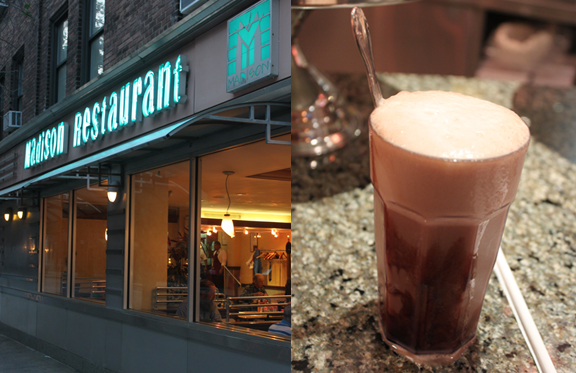
965 First Avenue, 212-421-0948
Nice booths, extensive menu, neon exterior… this Sutton Place restaurant has all you need and expect from a typical New York diner. It’s also a handy spot after enjoying spectacular Manhattan-esque views of the Queensboro Bridge. The egg cream is by no means a classic, but a nice reminder why we adore New York (and idolize it all out of proportion).
RITZ DINER 1133

First Avenue, 212-319-4993
Located in the looming shadow of the 59th Street Bridge, this East Side eatery considers itself a “ritzy” diner. So I was surprised to learn that the Ritz takes its name not from the hotel, or even the downtown music club, but rather, the humble Ritz cracker. This refreshing lack of pretension and a thirst-quenching egg cream were all I needed to refuel after having walked over to Queens and back.
GENE’S COFFEE SHOP
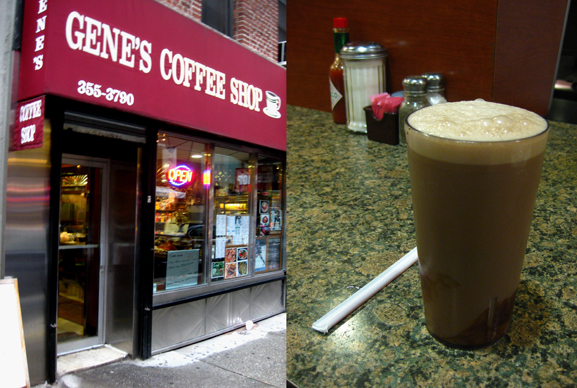
26 East 60th Street, 212-355-3790
Gene’s is your standard Midtown coffee shop: quiet, spotlessly clean but somehow lacking in character. Consequently, the egg cream is everything you’d expect: an understated classic, with good foam too.
VIAND COFFEE SHOP
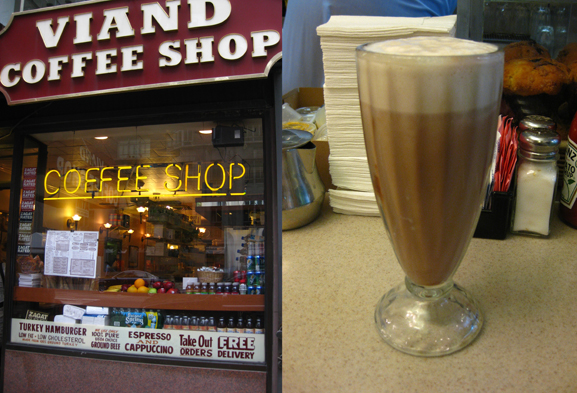
673 Madison Avenue, 212-751-6622
Top marks for presentation go to Viand Coffee Shop, whose light and foamy egg cream comes served in a decidedly old school soda fountain sundae glass. One of three Viands in the city, this one near 61st Street is the original and best.
EAT HERE NOW
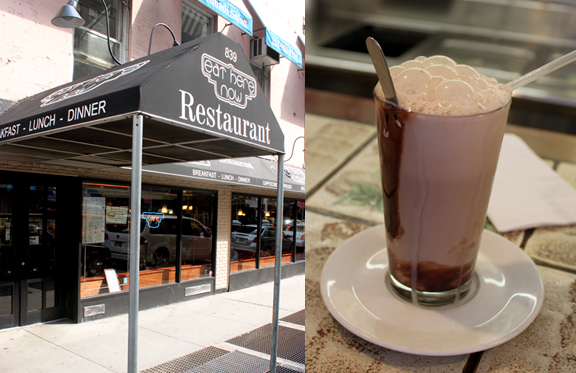
839 Lexington Avenue, 212-751-0724
I managed to resist Eat Here Now’s titular command, but that didn’t stop me ordering a drink. The young woman behind the counter served my egg cream to me and then stared puzzled at the glass for a few seconds before realizing she’d forgotten to add seltzer water (I’m sure if I was working in a restaurant on Lexington Avenue my mind would drift occasionally too). The refurbished drink was just the job on a humid afternoon spend ambling among the crowds at Bloomingdale’s.
NEIL’S COFFEE SHOP
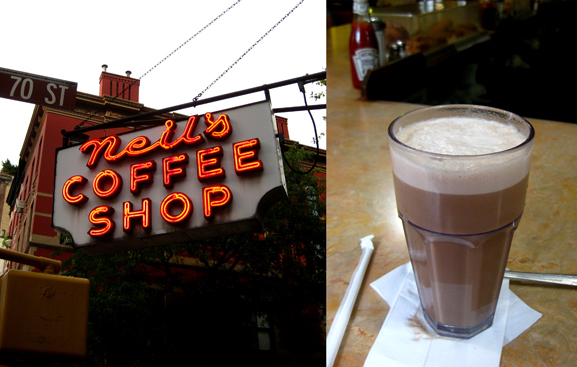
961 Lexington Avenue, 212-628-7474
Classic coffee shops continue to proliferate on the Upper East Side, to where those hip downtown kids rarely venture. One of the best is Neil’s, on a leafy stretch of Lexington Avenue. The afternoon crowd is dominated by school children fresh out of class, several of whom stared longingly at my near-to perfect egg cream. Expertly mixed with a frothy head, served in a real glass and setting me back just two bucks, Neil’s is as good as it gets.
EJ’S LUNCHEONETTE
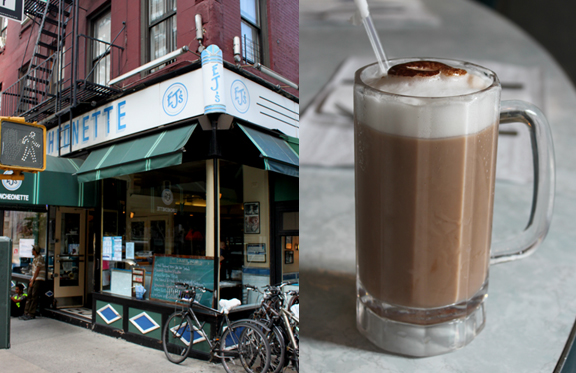
1271 Third Avenue, 212-472-0600
Family-friendly soda shops seem to abound on the Upper East Side, where instead of the faux-retro hipster joints that are popping up downtown and in Brooklyn, you get the real deal. The twenty-something soda jerk wears a paper hat (and thankfully no waxed moustache) and my egg cream arrived in a plastic tankard (which I mistook for glass until I lifted it) with a little swirl of chocolate. I even began chatting with an elderly gentleman who mistook me for a French tourist.
LEXINGTON CANDY SHOP
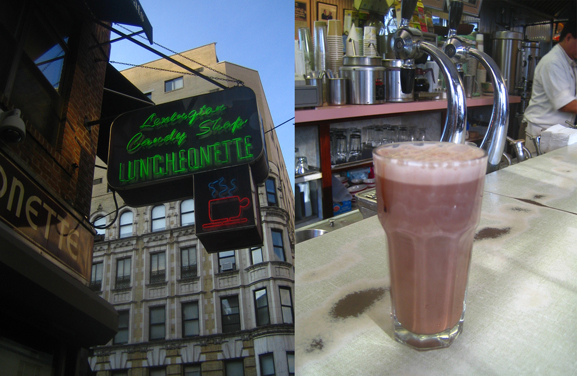
1226 Lexington Avenue, 212-288-0057
From its vintage neon sign to the swan-necked soda fountains which adorn the counter, Lexington Candy is everything you’re looking for in a soda shop. There’s even a framed picture of a young Robert Redford. But nostalgia doesn’t come cheap: this might be Manhattan’s most affluent neighborhood, but $4.25 for an egg cream still seems steep to me.
WESTSIDE RESTAURANT
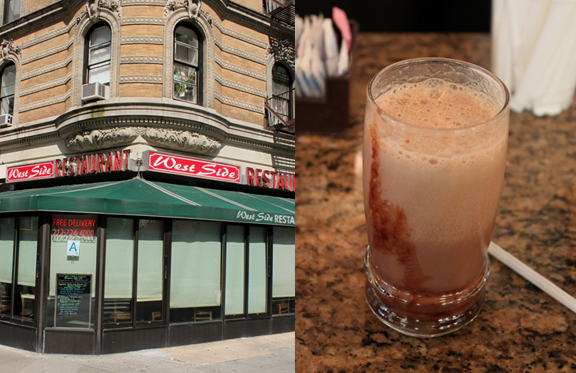
2020 Broadway #2, 212-724-4000
This family-run eatery has been serving discerning Upper West Siders for over half a century. On a prime corner of Broadway, it’s blessed with swathes of windows from which to people-watch (although they’d pulled the shades down on my visit). The egg cream was a little shoddily mixed but tasted good, and my tuna salad sandwich was one of the best I’ve had away from Eisenberg’s. The cashier even waived the credit card minimum.
LANSKY’S OLD WORLD DELI
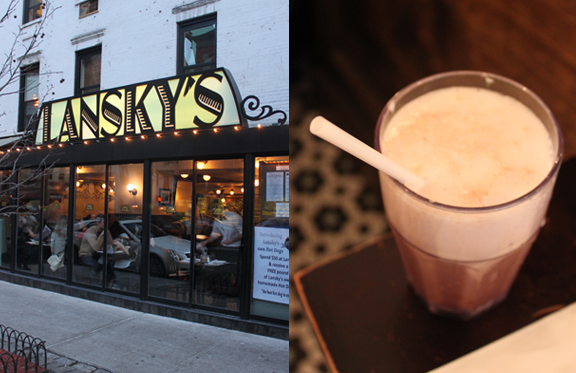
235 Columbus Avenue, 212-787-0400
Sometimes “old world charm” can be deceptive. Lansky’s Old World Deli looks and feels like it’s been on Columbus Avenue since the day your grandparents got off the boat, but in truth it only opened in 2008. The brainchild of Brooklyn-born, French-trained restaurateur and chef David Ruggerio, Lansky’s is just what the neighborhood ordered — and not above serving a perfect egg cream. Shortly after the arrival of my “knishwich” (I was hungry, OK?) I experienced my own “old world” jolt of nostalgia, when in walked a girl wearing a sweatshirt from Loughborough University, my hometown college.
3 STAR COFFEE SHOP
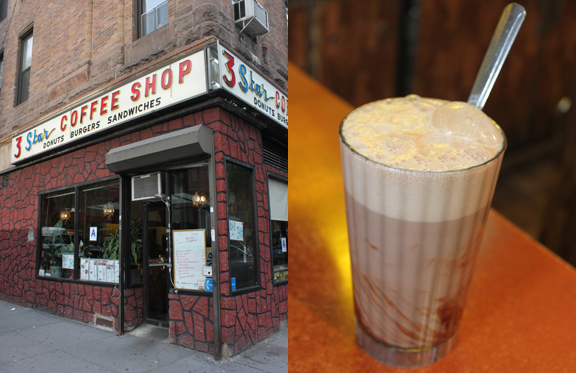
541 Columbus Avenue, 212-574-6780
This Upper West Side establishment is something of a time warp: from the faux-stone cladding on the outside to the laminate wood-paneled interior (complete with Greek mural and lone patron sipping soup), it’s just the kind of place you’d find a good egg cream. The foam on this lasted to the very end: three stars indeed.
CITY DINER
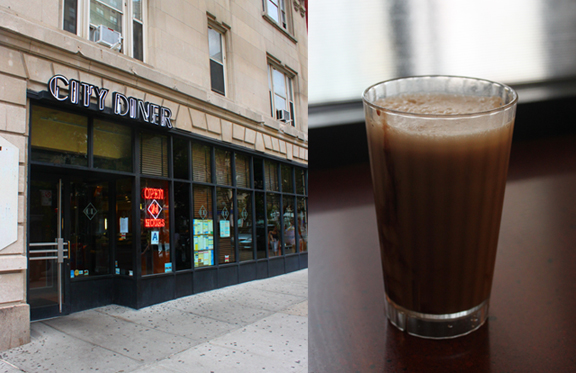
2441 Broadway, 212-877-2720
One of several innocuous diners that clutter this stretch of Broadway, City Diner has a nice retro-looking bar but the egg cream was poorly mixed (no foam) and left me a little cold.
MANHATTAN DINER
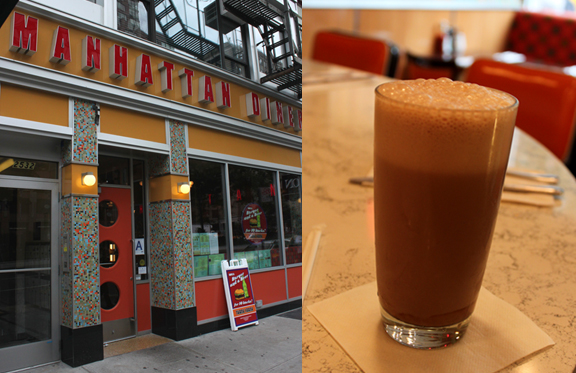
2532 Broadway, 212-932-0068
The sister restaurant of the recently-closed Manhattan Diner at Broadway and 77th Street, this outpost has some tasty furnishings, including brown and orange swivel seats with white piping. On the wall, famous Upper West Siders from John and Yoko to Tina Fey gaze down from a slightly corporate looking montage. The egg cream is fine, but I definitely preferred their other restaurant eighteen blocks south.
METRO DINER
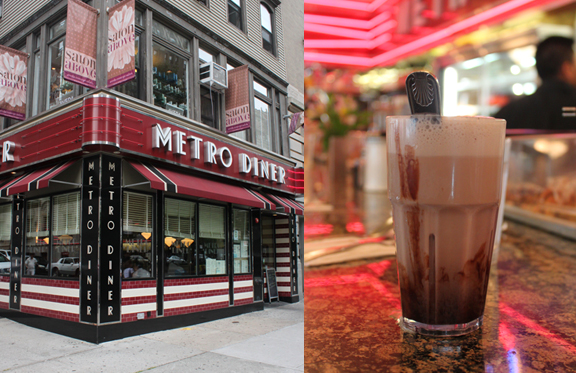
2641 Broadway, 212-866-0800
With its Deco lamps, Venetian blinds, leatherette booths and teardrop-shaped corner tables, the Metro Diner is arguably the most visually perfect New York diner I’ve had the pleasure of setting foot in. The egg cream is rendered all the more perfect by the glow of pink neon strips reflected in its foam. I didn’t want to leave.
TOM’S RESTAURANT
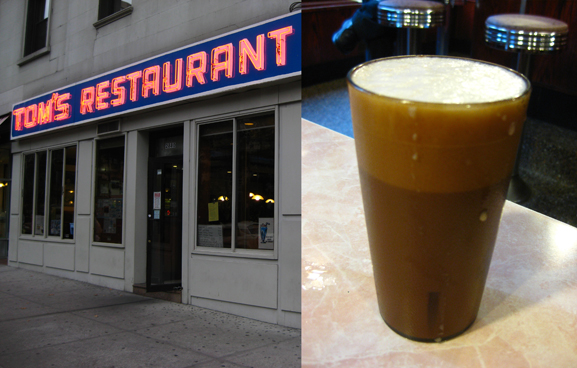
2880 Broadway, 212-864-6137
The inspiration for the Suzanne Vega song “Tom’s Diner”, this uptown eatery was later immortalized by a certain “show about nothing”. More recently it was revealed that President Barack Obama was a fan during his Columbia days. Today Tom’s more than lives off its reputation as the café of choice for Jerry, George, Elaine and Kramer. The egg cream arrived fine and frothy, and yada yada yada… Tom’s is not quite master of its domain.
Queens
COURT SQUARE DINER
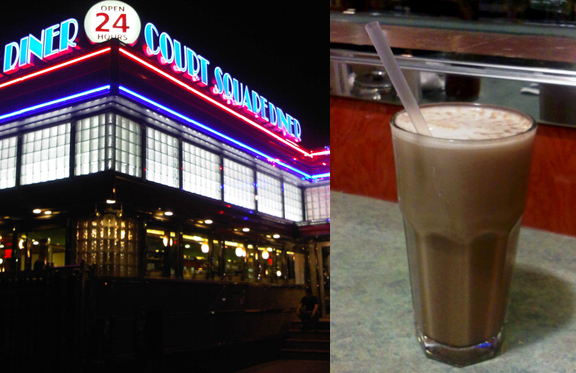
4530 23rd Street, 718-392-1222
Yes, I do occasionally leave Manhattan! On a recent trip to Queens I took the 7 train across the river to Long Island City, where the spanking remodelled Court Square Diner awaits beneath the elevated subway tracks. The egg cream is just the job and positively glistens amidst all that chrome. Worth the trip!
STILL ON MY LIST
As you can see this project is far from complete. I hope to get to these fine eateries sooner rather than later… Stay tuned kids!
Roxy Coffee Shop / 20 John Street, 212-349-4704
George’s Café / 98 Greenwich Street, 212-269-8026
Gee Whiz Diner / 295 Greenwich Street, 212-608-7200
Amelia’s Coffee Shop / 110 Varick Street, 212-925-5998
Khondoker Luncheonette / 58 Kenmare Street, 212-431-1192
Olympic Restaurant / 115 Delancey Street, 212-420-8153
Katz’s Delicatessen / 205 East Houston Street, 212-254-2246
Sammy’s Roumanian Steak House / 157 Chrystie Street, 212-673-0330
Village Yogurt / 547 Sixth Avenue, 212-929-3752
La Taza De Oro Restaurant / 96 Eighth Avenue, 212-243-9946
A&A Coffee Shop / 46 West 21st Street, 212-255-4811
Roxy Delicatessen / 1565 Broadway, 212-921-3333
Ellen’s Stardust Diner / 1650 Broadway, 212-956-5151
Café Edison / 228 West 47th Street, 212-840-5000
Olympic Diner / 807 Eighth Avenue, 212-956-3230
Sixth Avenue Café / 1414 Sixth Avenue, 212-888-8881
Ben Ash Delicatessen / 857 Seventh Avenue, 212-265-1818
Cosmic Diner / 888 Eighth Avenue, 212-333-5888
Moonstruck Diner / 250 East 58th Street, 212-752-1711
Nations Café / 875 First Avenue, 212-308-2001
Plaza Diner / 1066 Second Avenue, 212-980-8282
Lenox Hill Grill / 1105 Lexington Avenue, 212-879-9520
Lexington Grill / 1332 Lexington Avenue, 212-987-1500
Nectar Restaurant / 1022 Madison Avenue, 212-535-4115
First Avenue Restaurant / 1433 First Avenue, 212-794-5246
3 Star Diner / 1462 First Avenue, 212-861-7500
Café 79 / 1514 First Avenue, 212-288-8234
Gracie Mews Diner / 1550 First Avenue, 212-861-2290
3 Decker Restaurant / 1746 Second Avenue, 212-289-9936
Utopia / 267 Amsterdam Avenue, 212-873-6233
GONE TOO SOON
The following establishments disappeared before I had a chance to ever sample their egg creams. In some cases I missed out by several years, other times I was late by just a matter of days.
Grand Luncheonette / 229 West 42nd Street CLOSED 1997
Leshko’s Coffee Shop / 111 Avenue A CLOSED 1999
Kiev Restaurant / 117 Second Avenue CLOSED 2000
Jones Diner / 371 Lafayette Street CLOSED 2002
Moondance Diner / 80 Sixth Avenue CLOSED 2007
Teresa’s / 103 First Avenue CLOSED 2007
Sucelt Coffee Shop / 200 West 14th Street CLOSED 2007
Cheyenne Diner / 411 Ninth Avenue CLOSED 2008
Chez Brigitte / 77 Greenwich Avenue CLOSED 2008
Le Figaro Café / 184 Bleecker Street CLOSED 2008
M&G Diner / 383 West 125th Street CLOSED 2008
Joe Jr. Restaurant / 482 Sixth Avenue CLOSED 2009
Galaxy Diner / 174 Eighth Avenue CLOSED 2009
Empire Diner / 210 Tenth Avenue CLOSED 2010
Andrew’s Coffee Shop / 316 West 34th Street CLOSED 2010
Manhattan Diner / 2180 Broadway CLOSED 2011
Tramway Diner / 1143 Second Avenue CLOSED 2011
Andrew’s Coffee Shop / 246 West 38th Street CLOSED 2011
